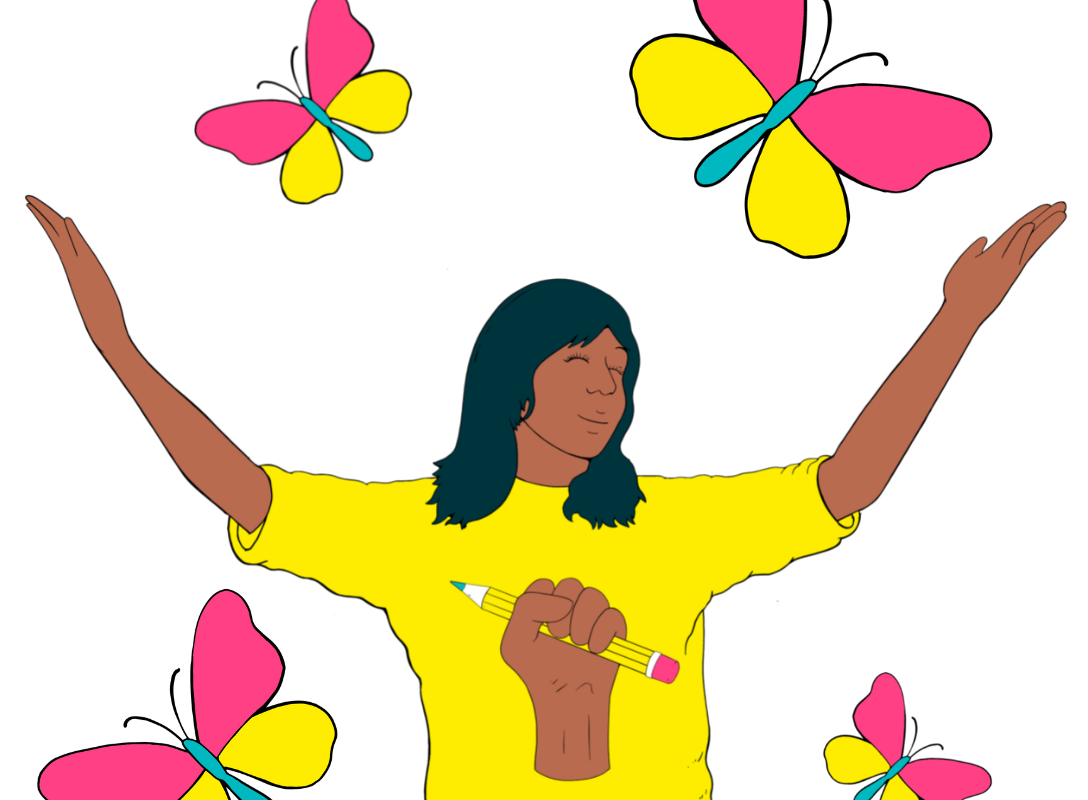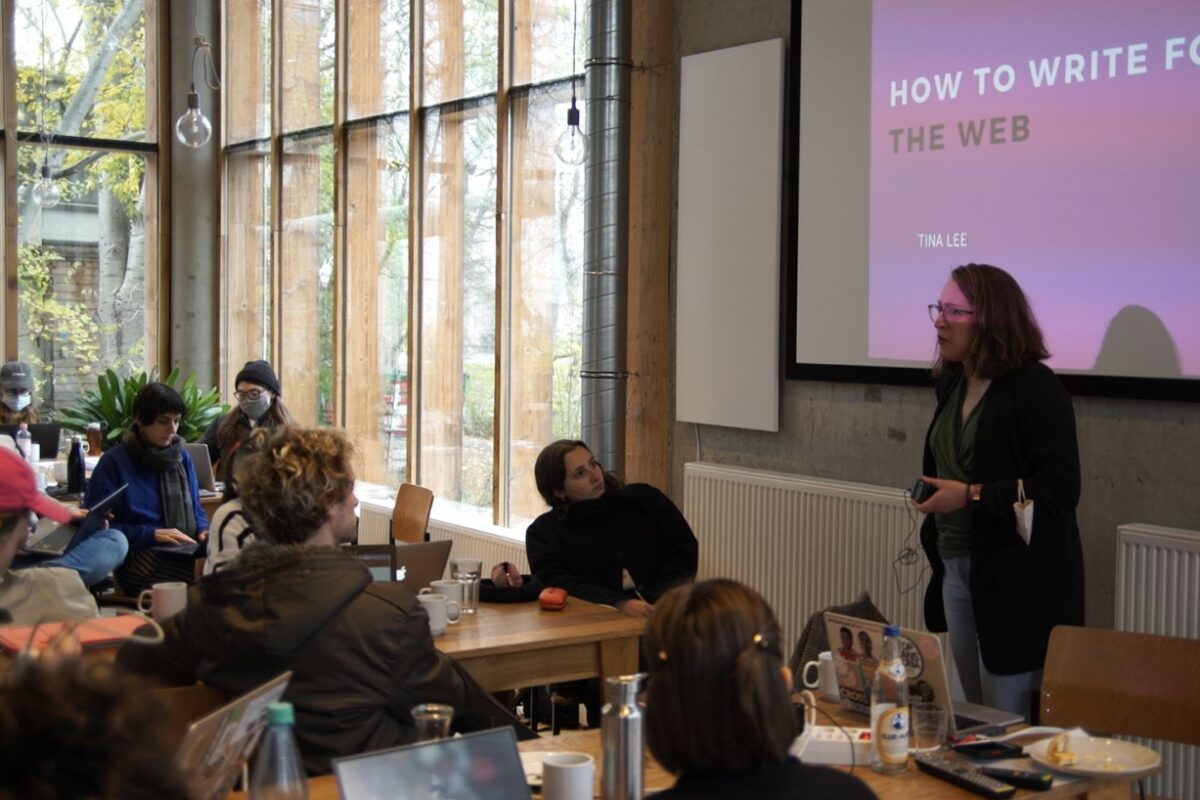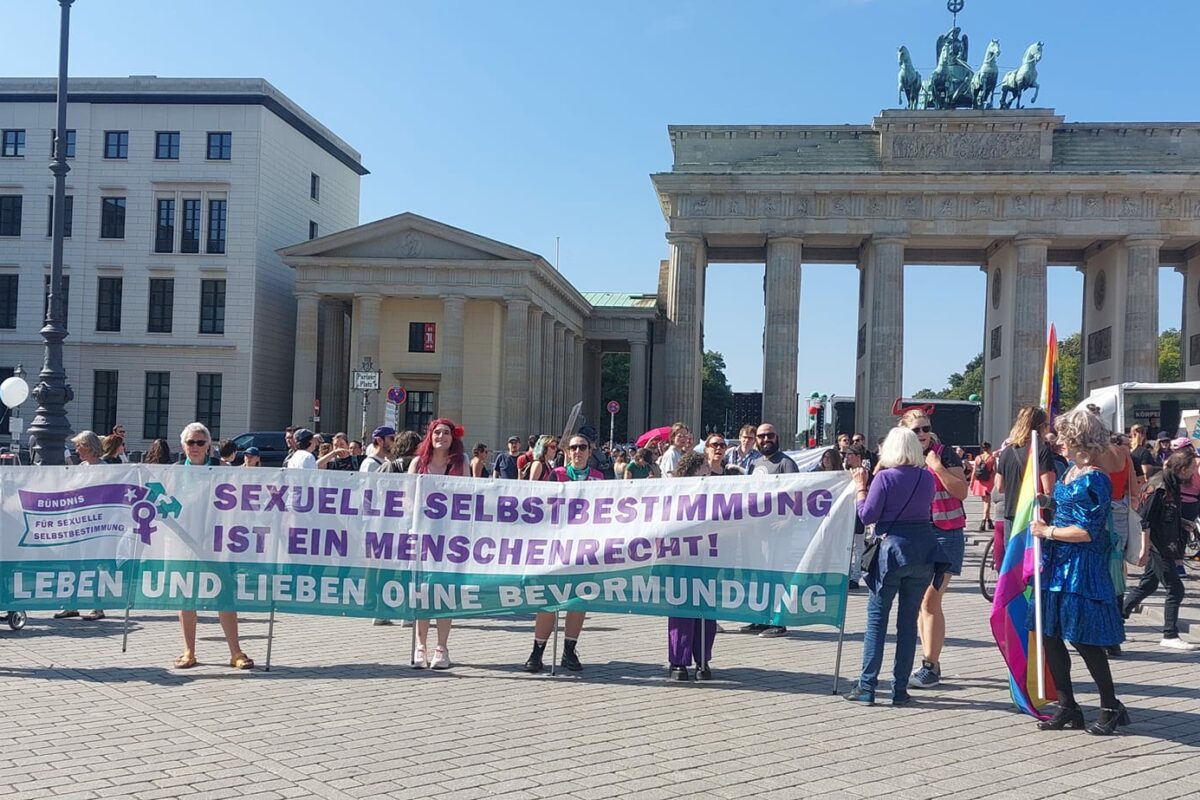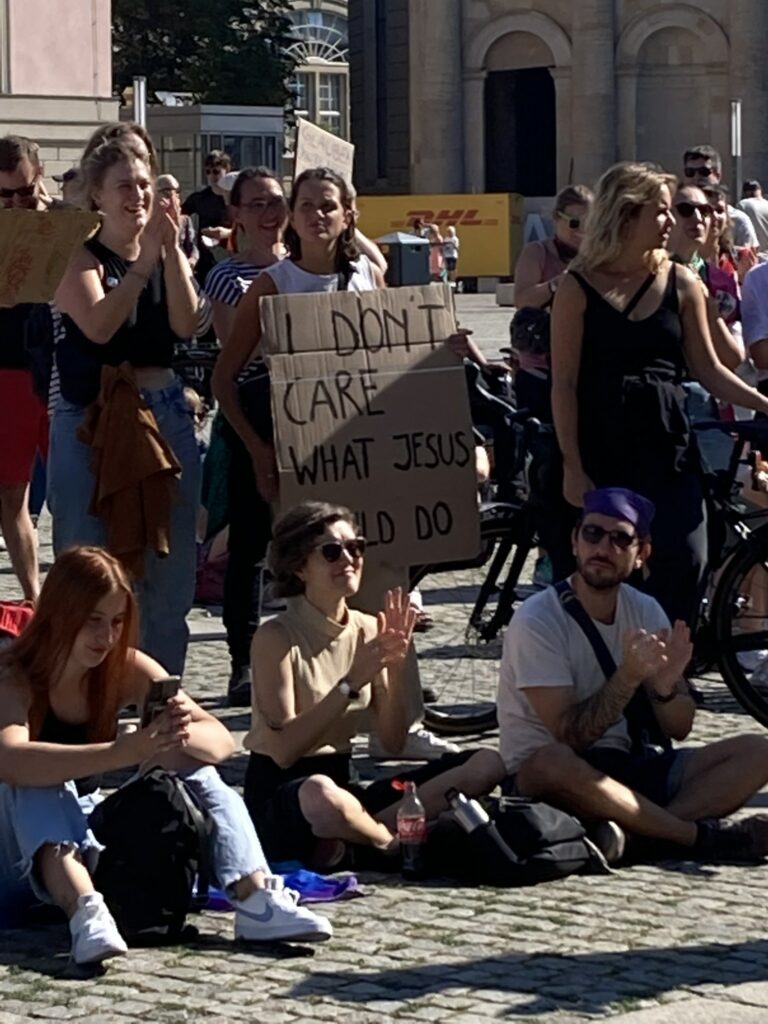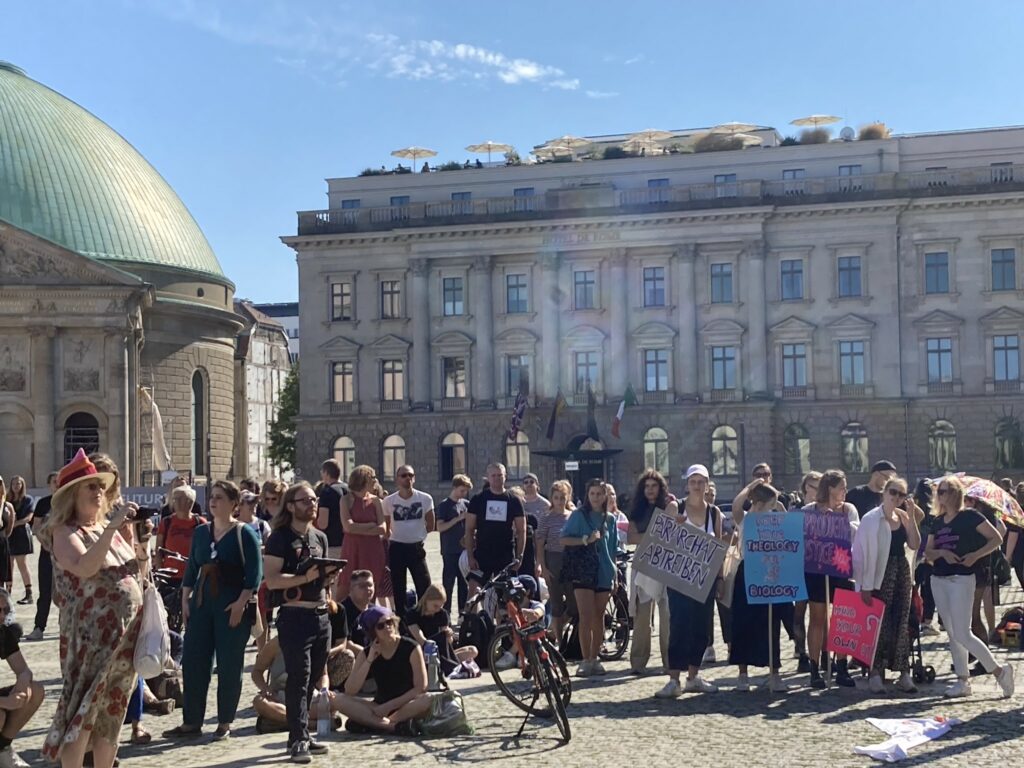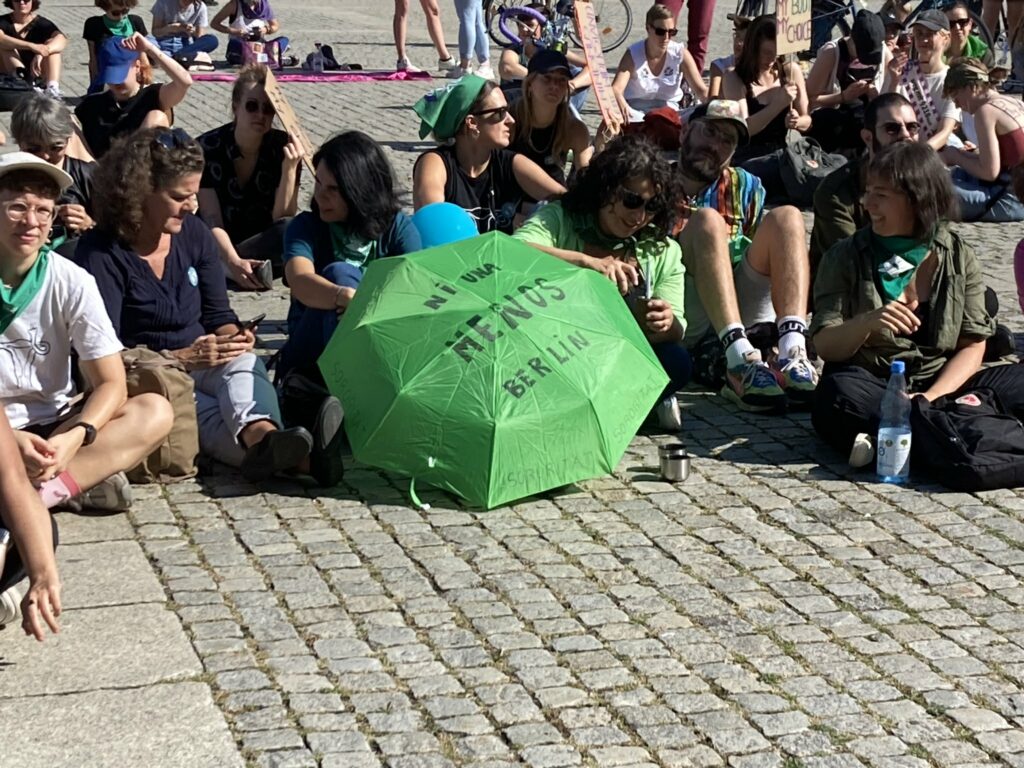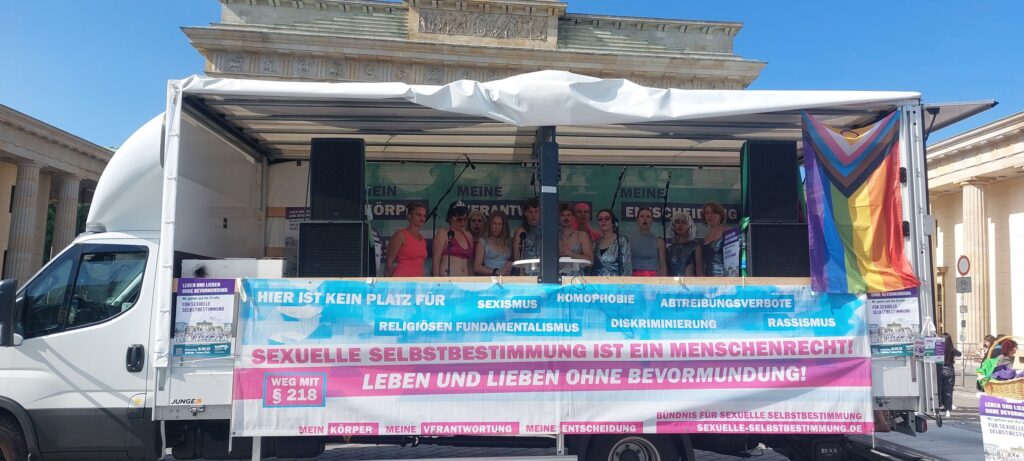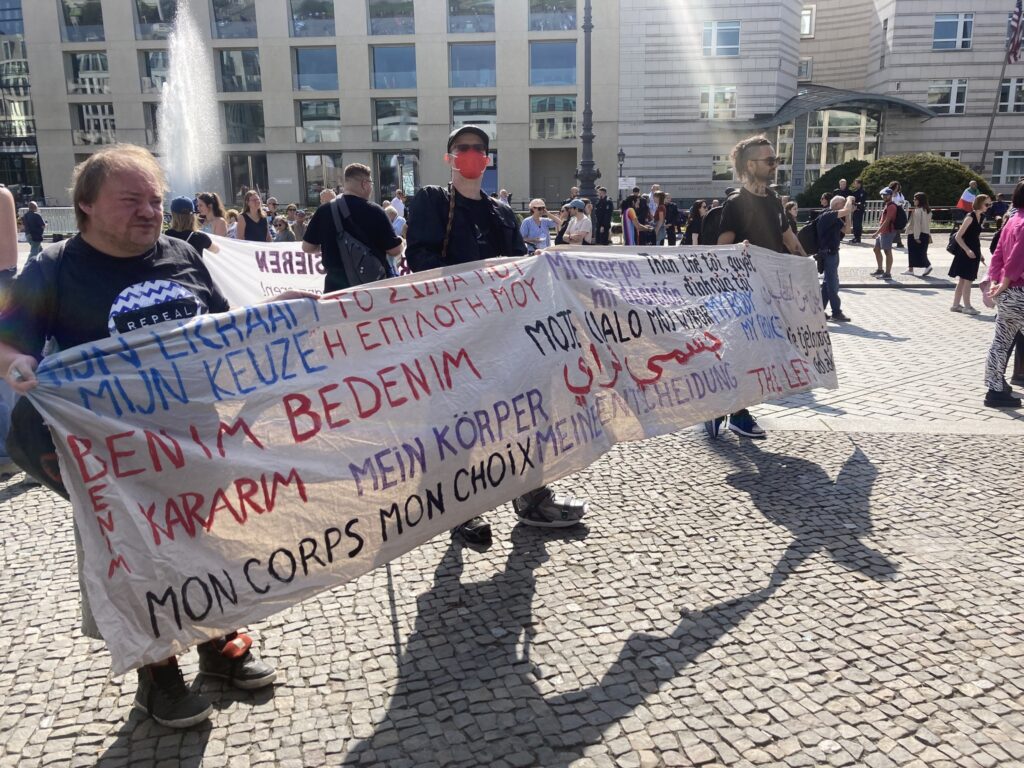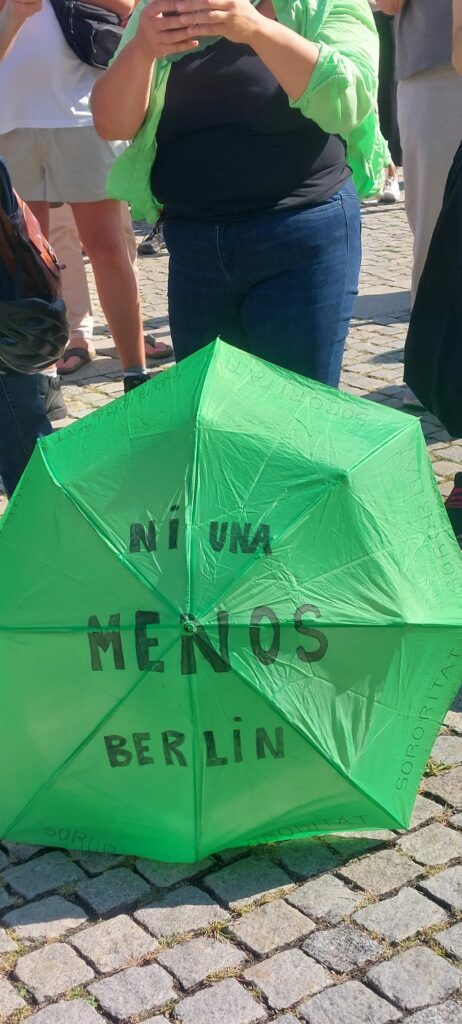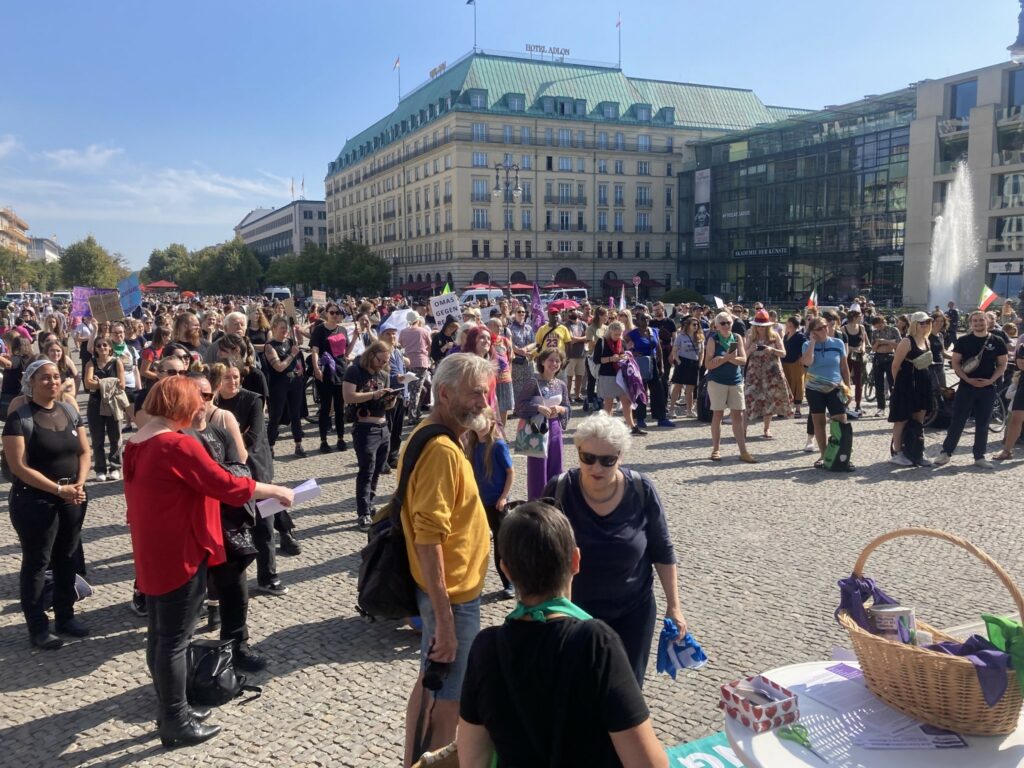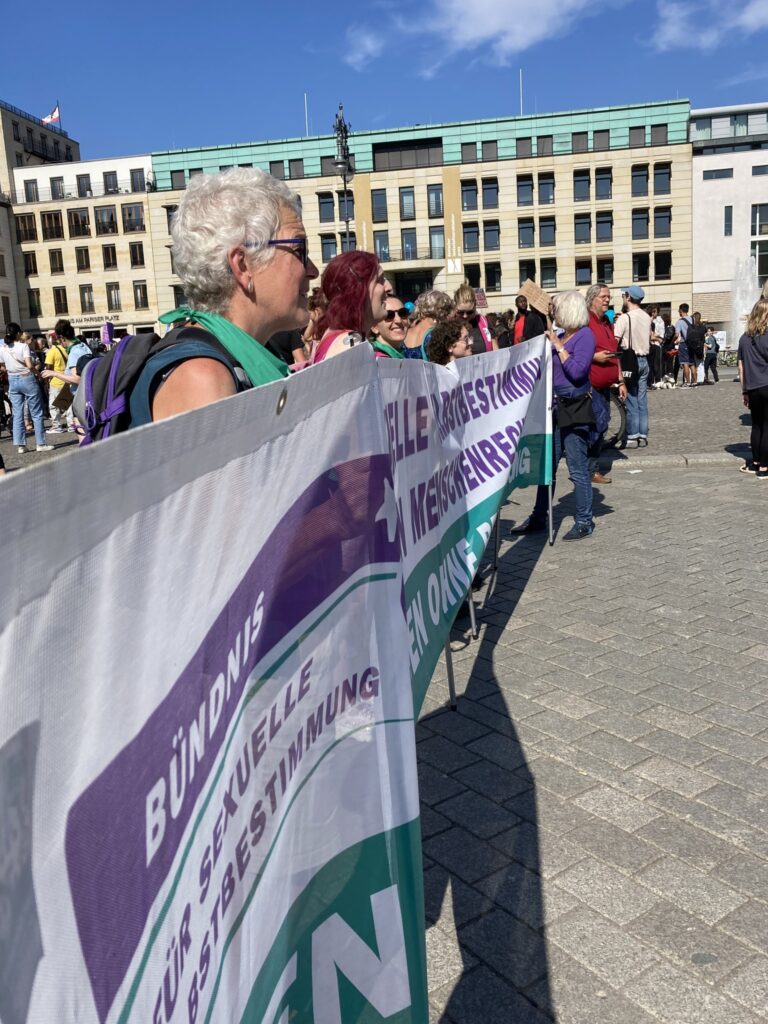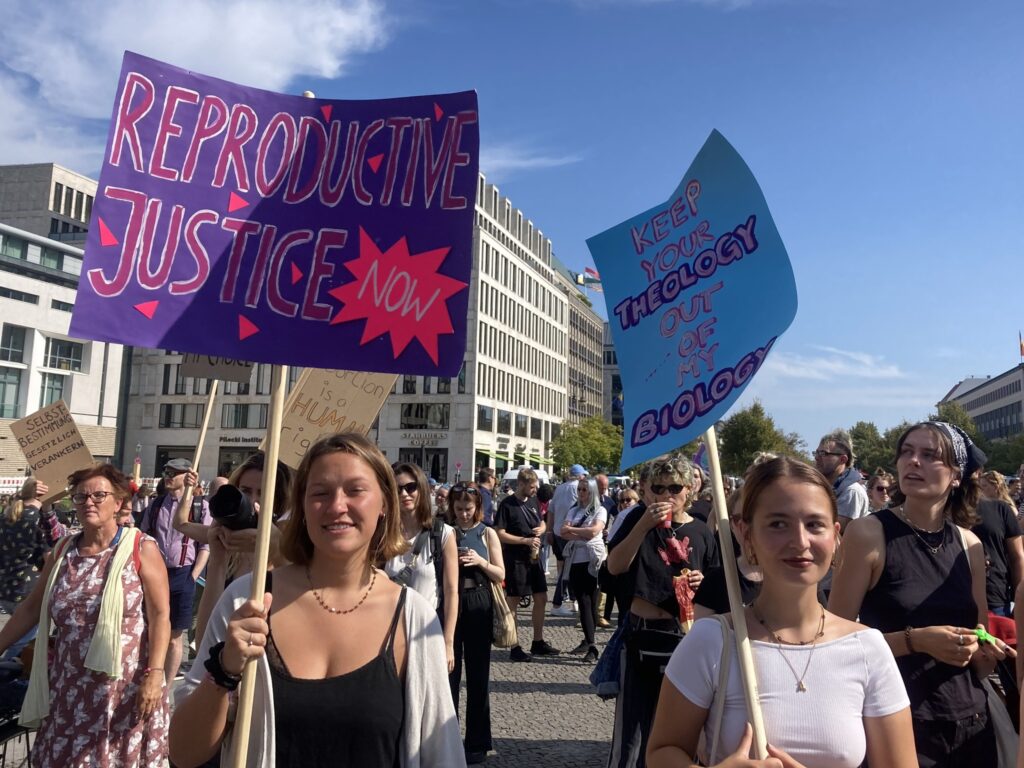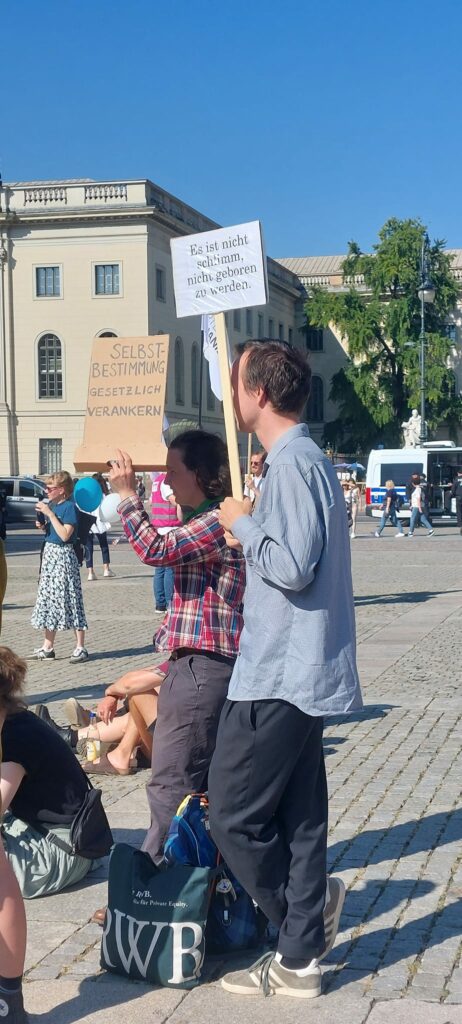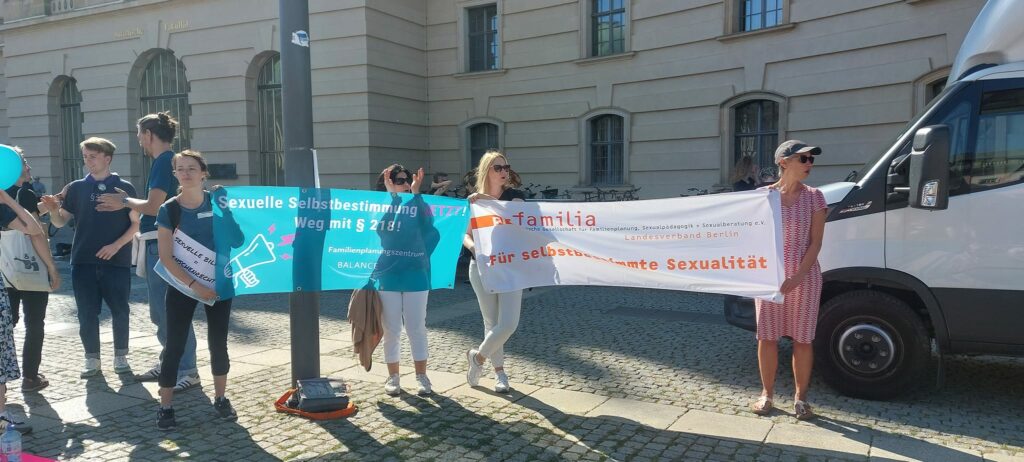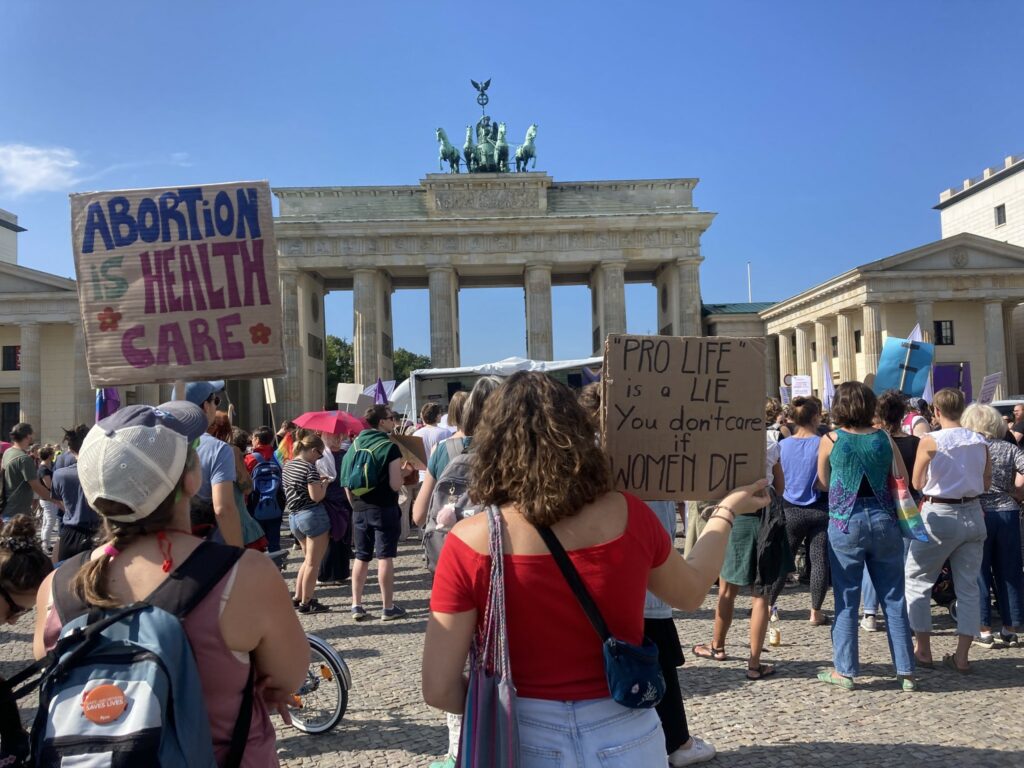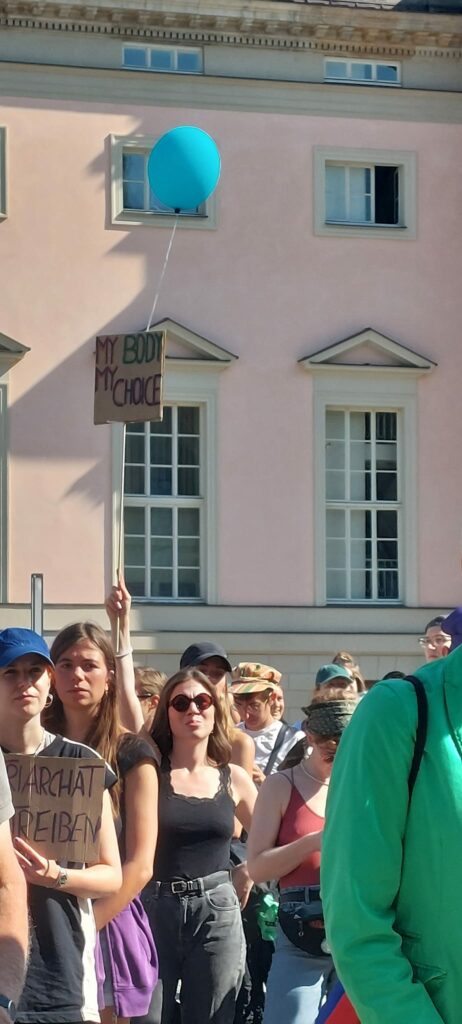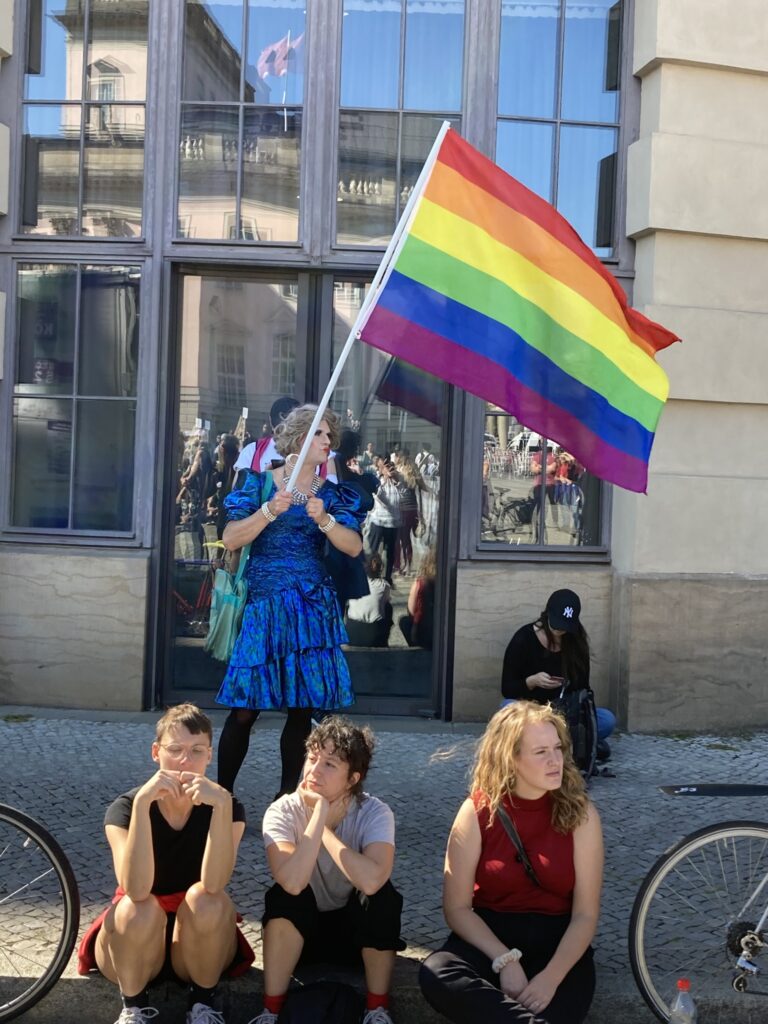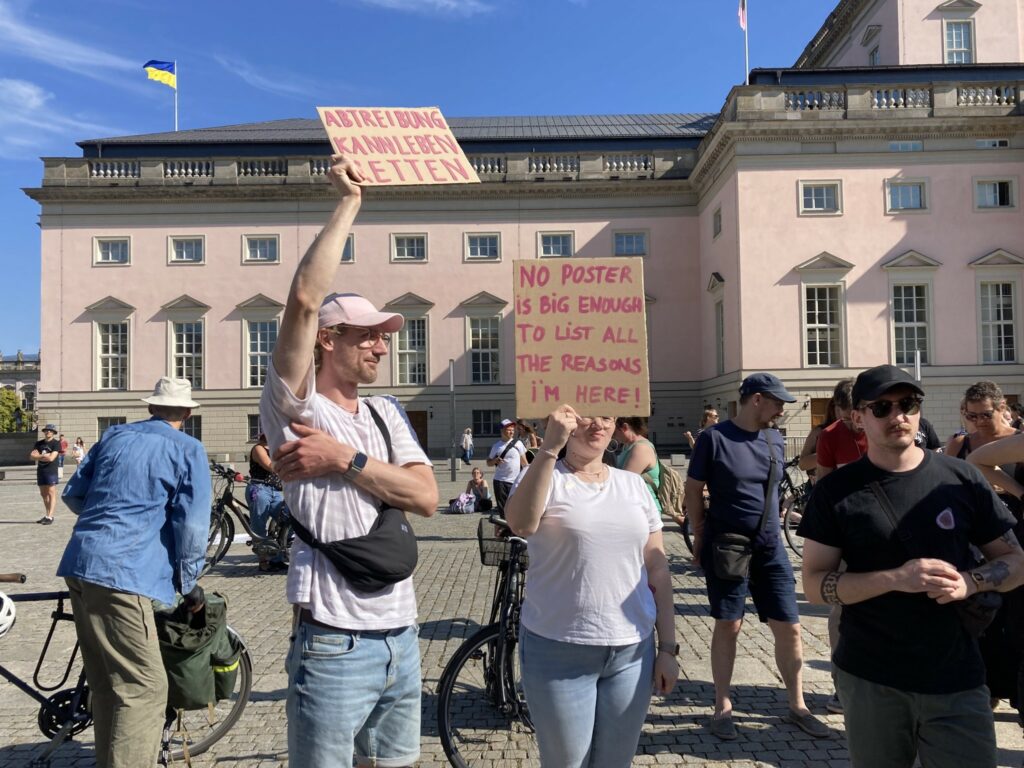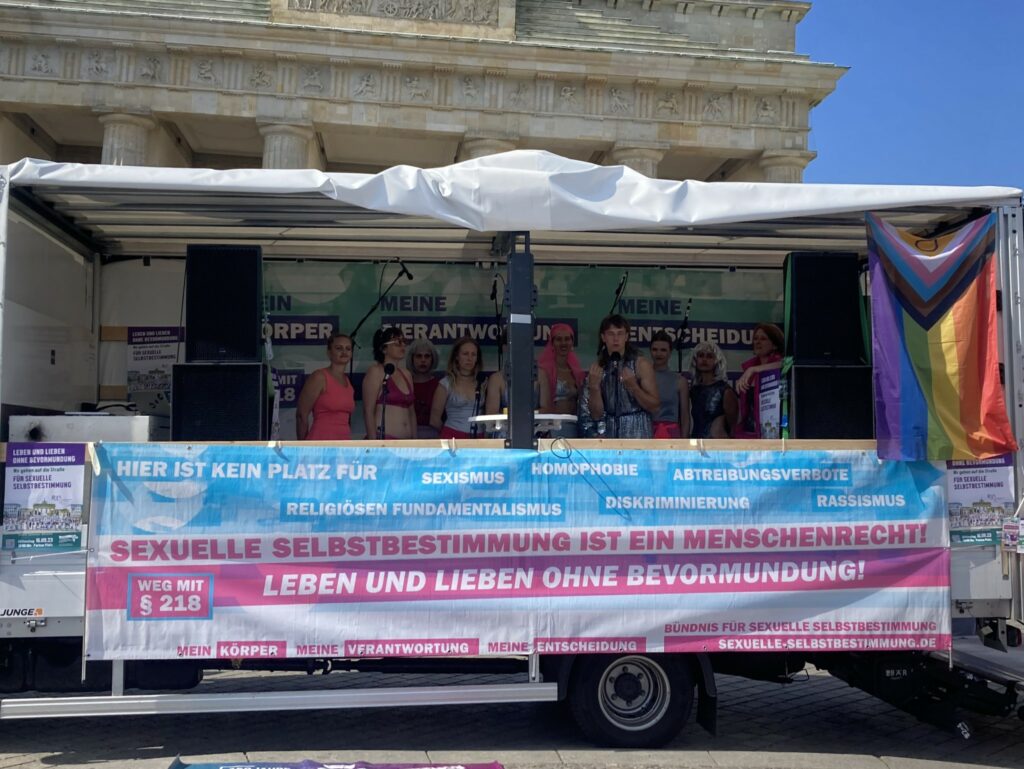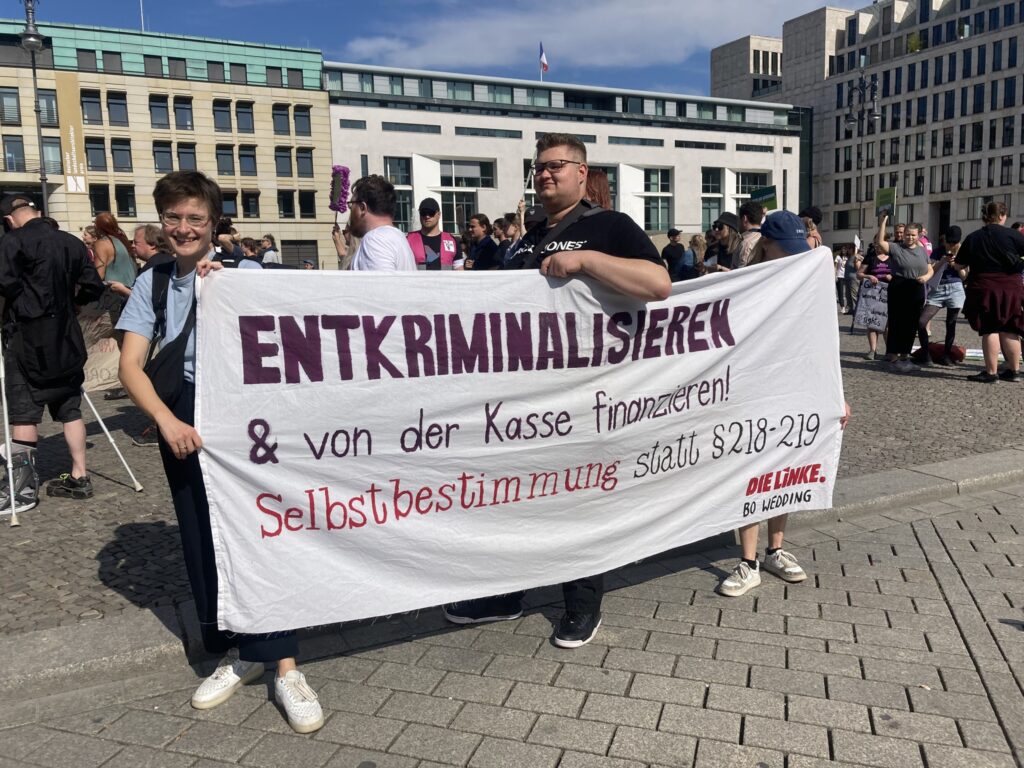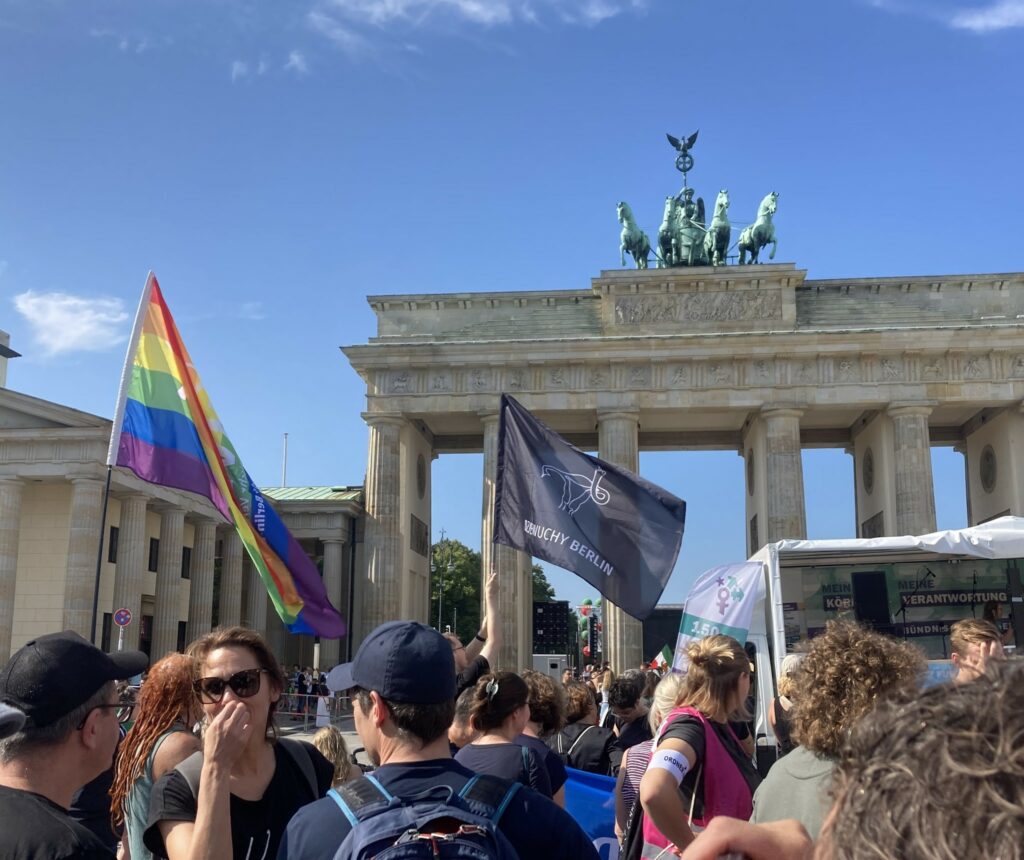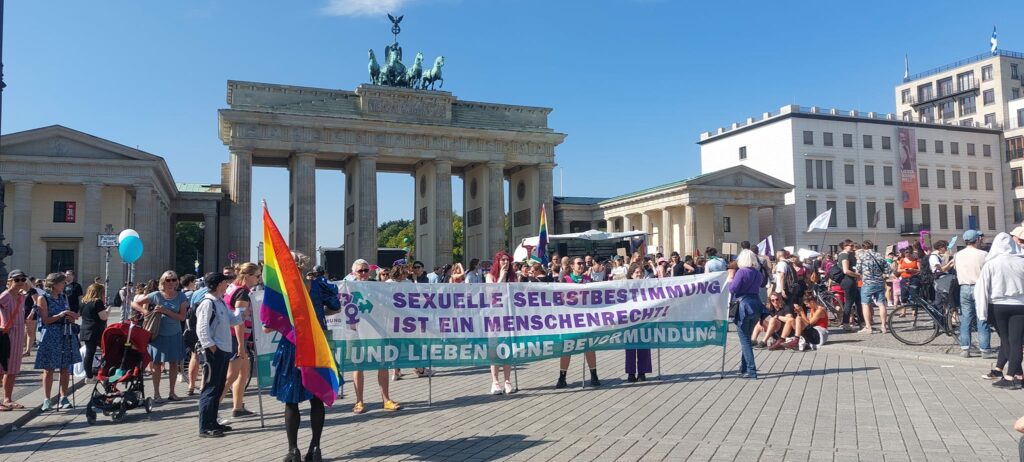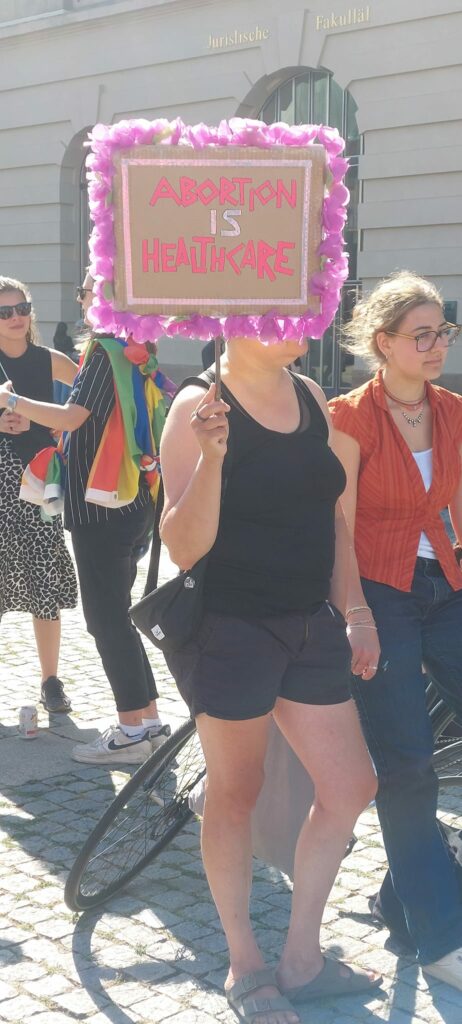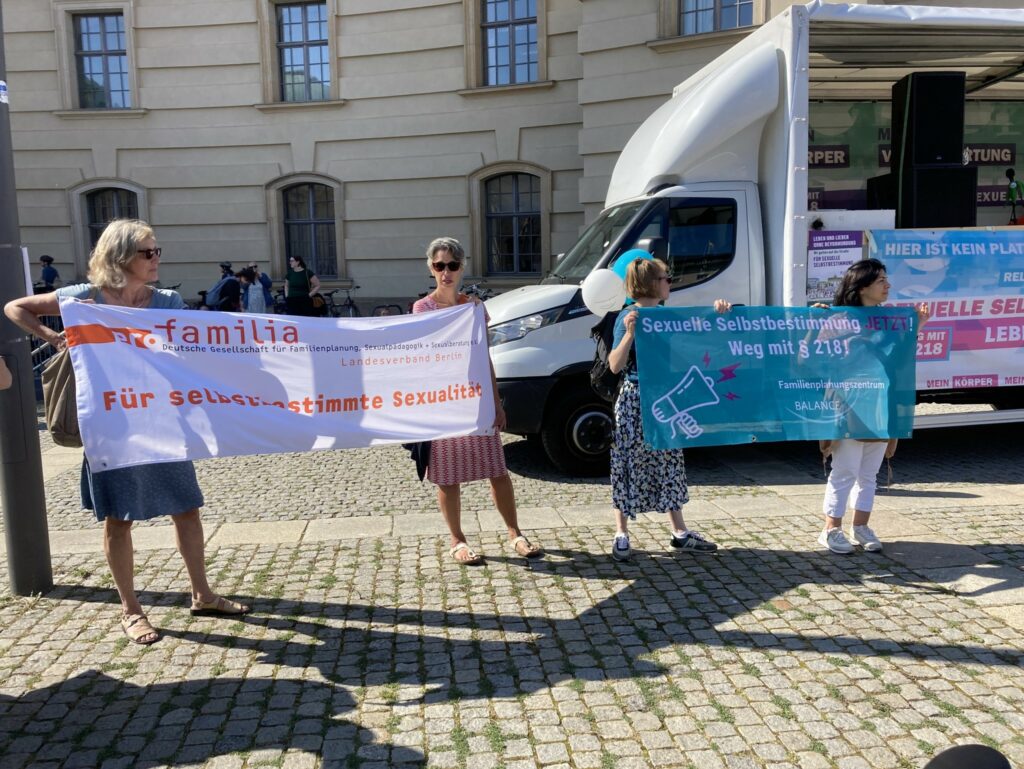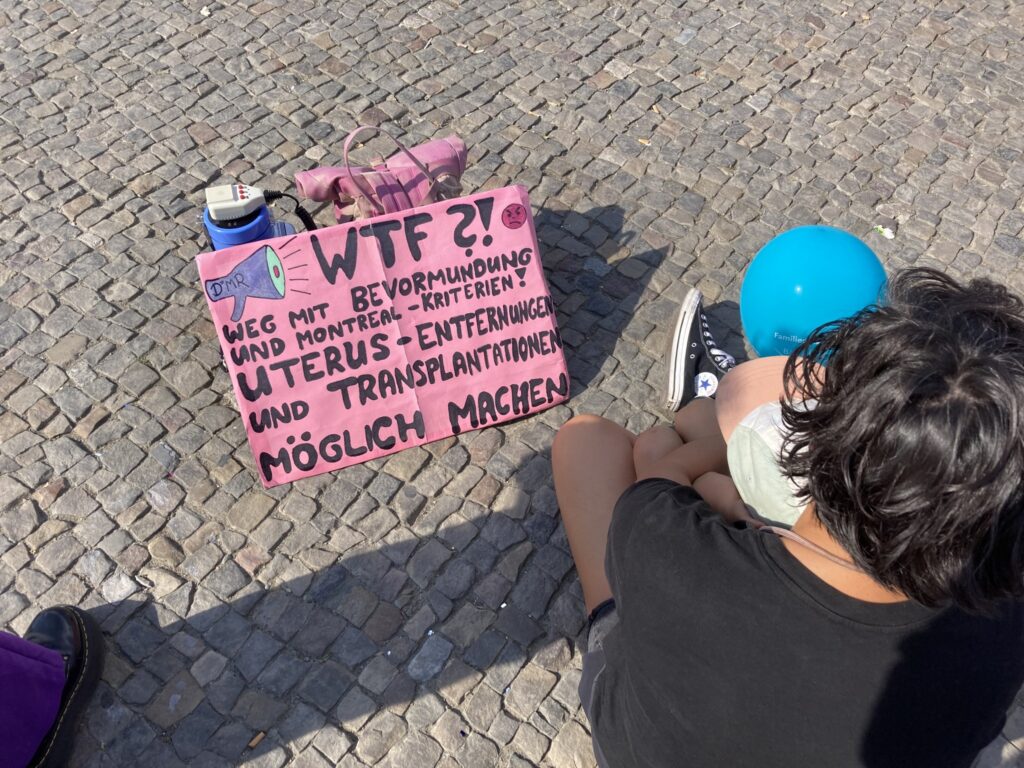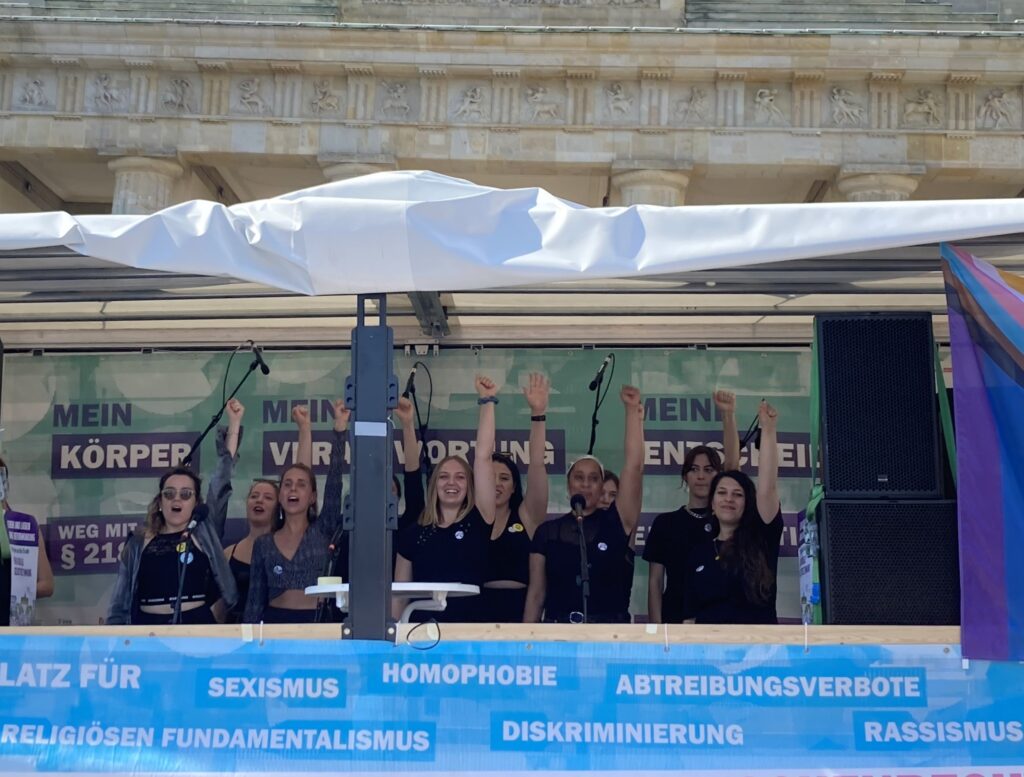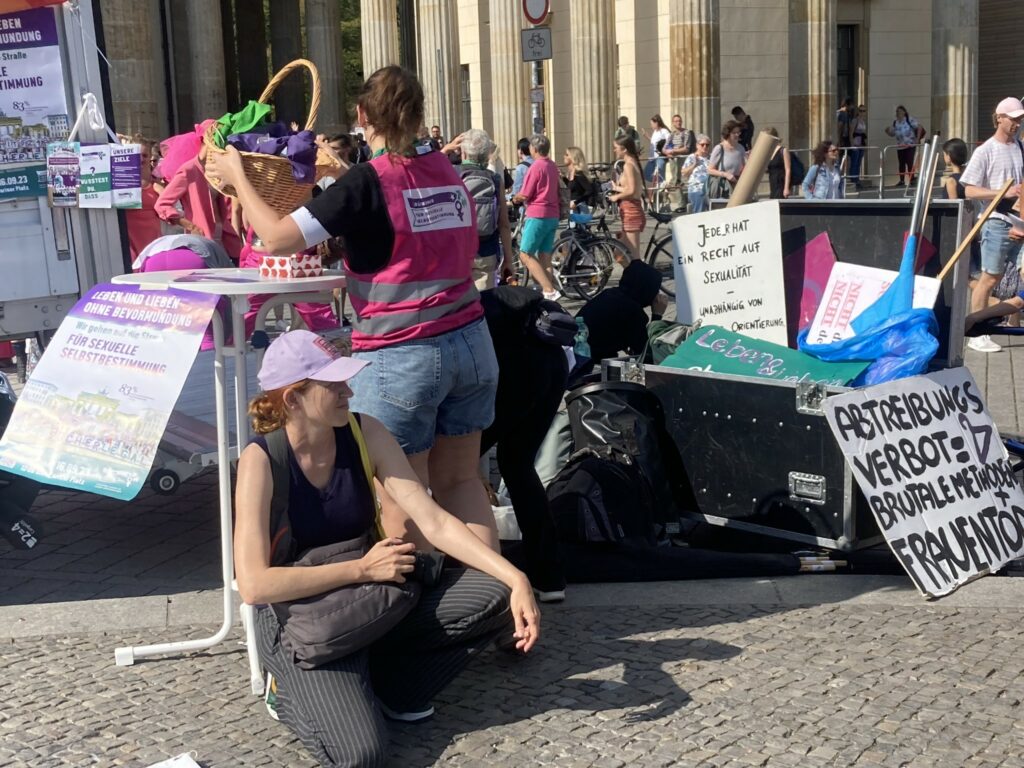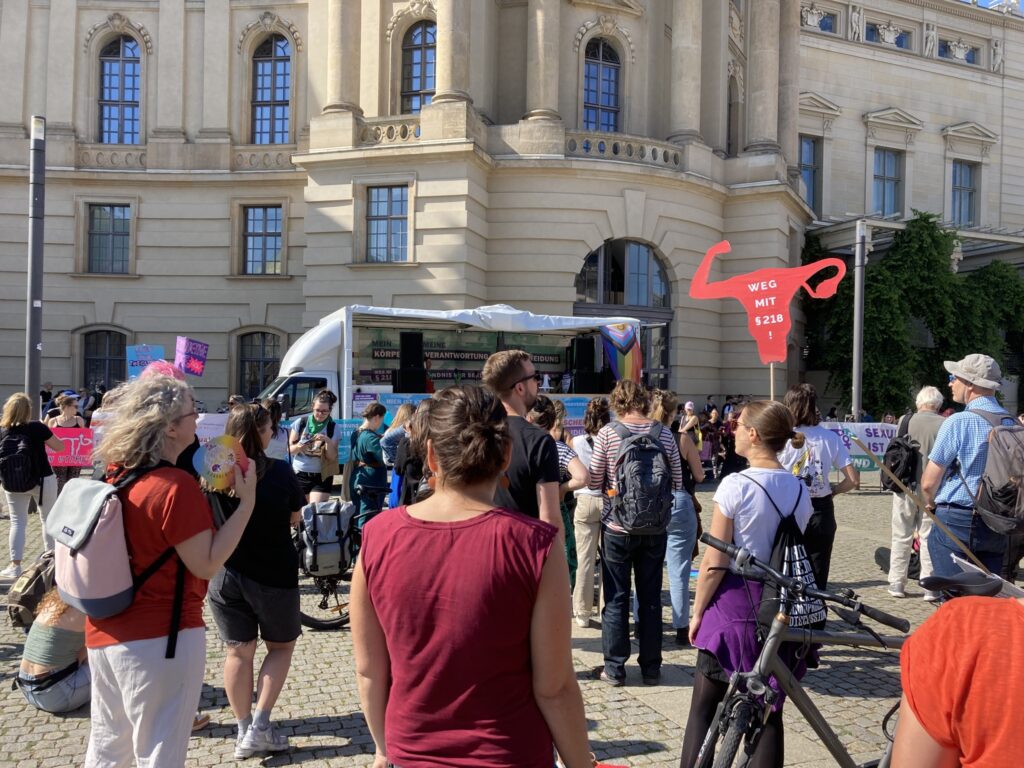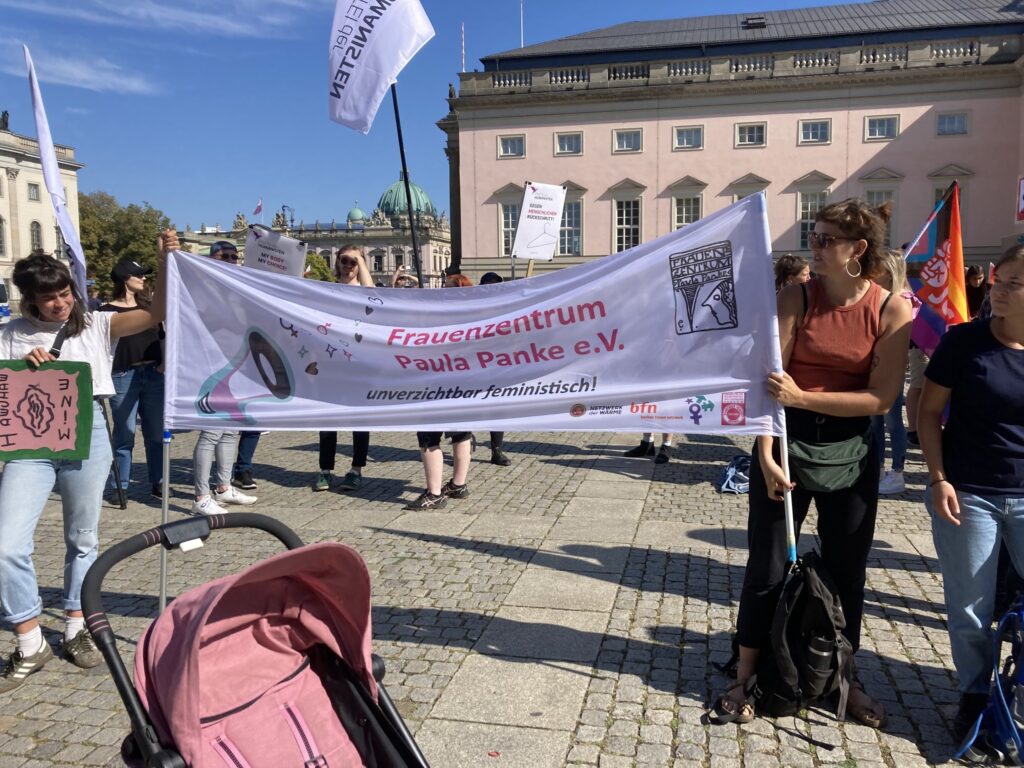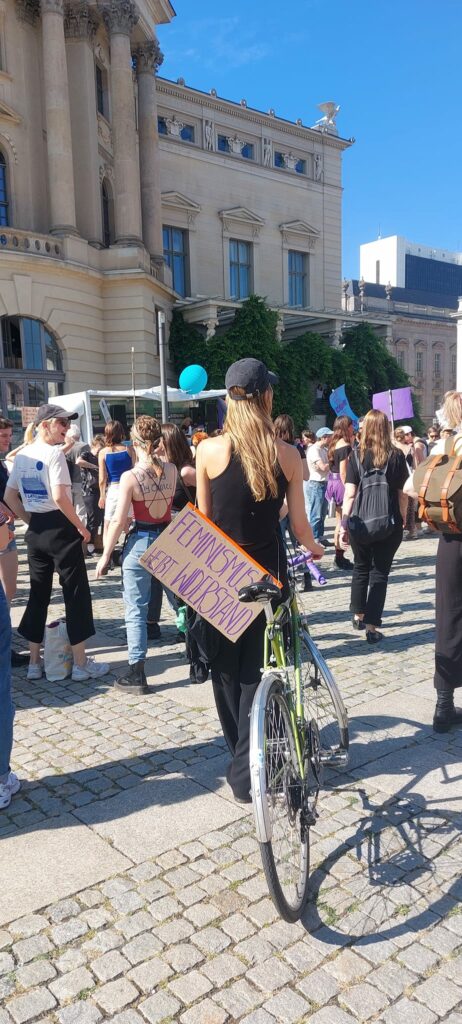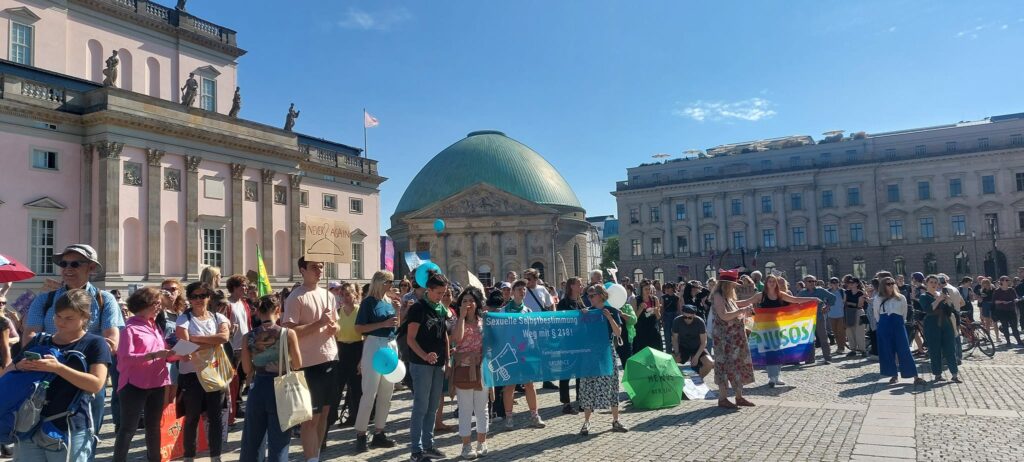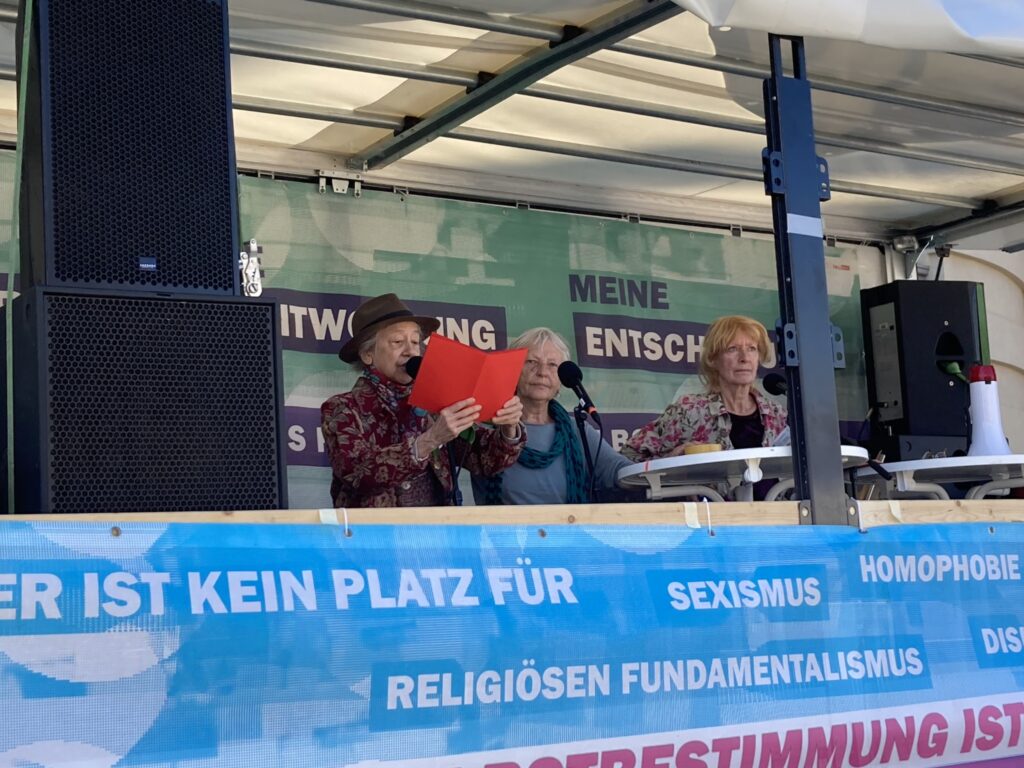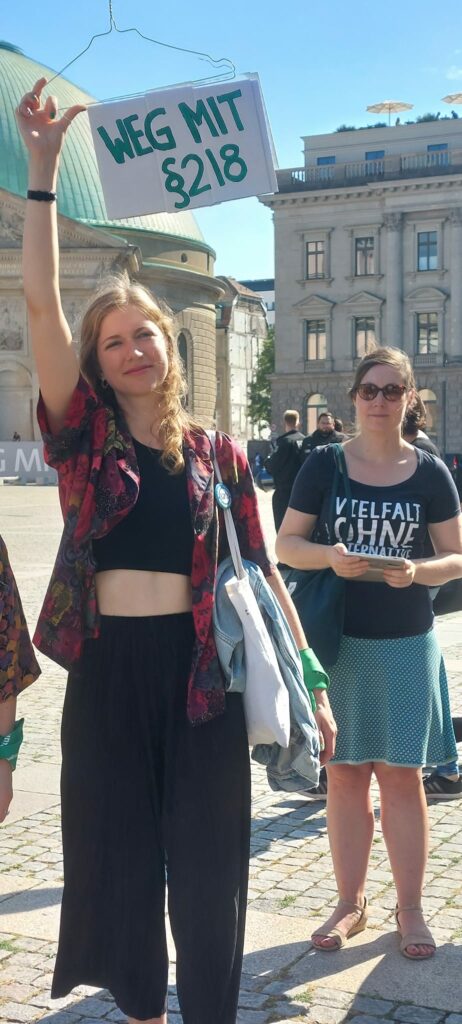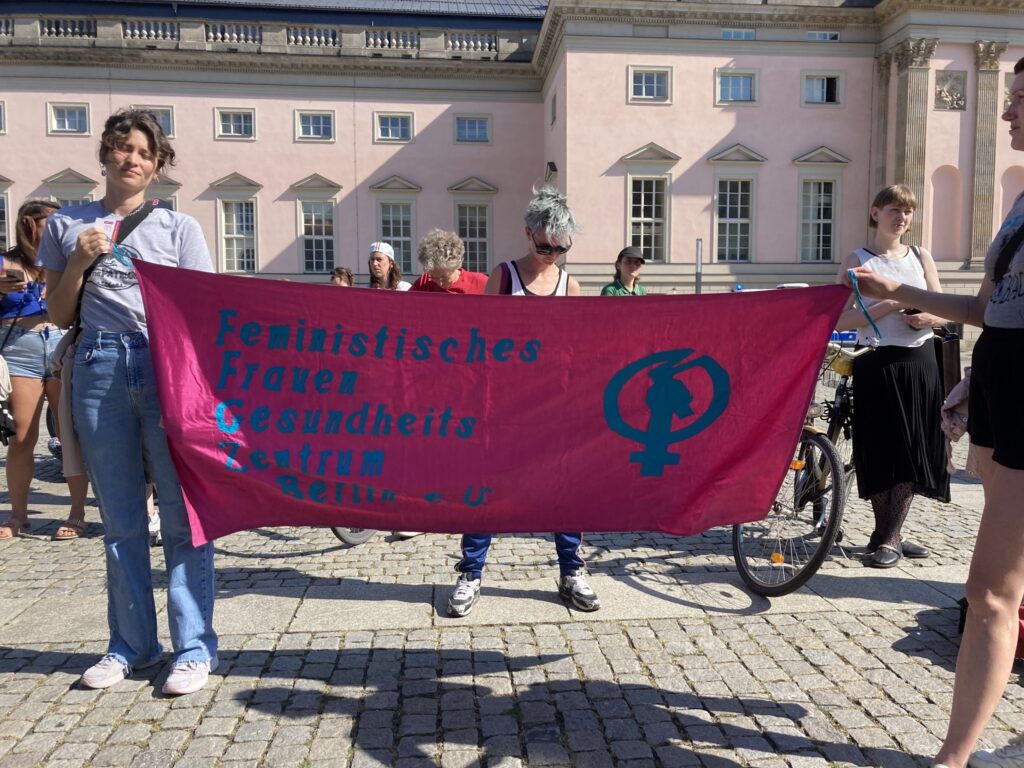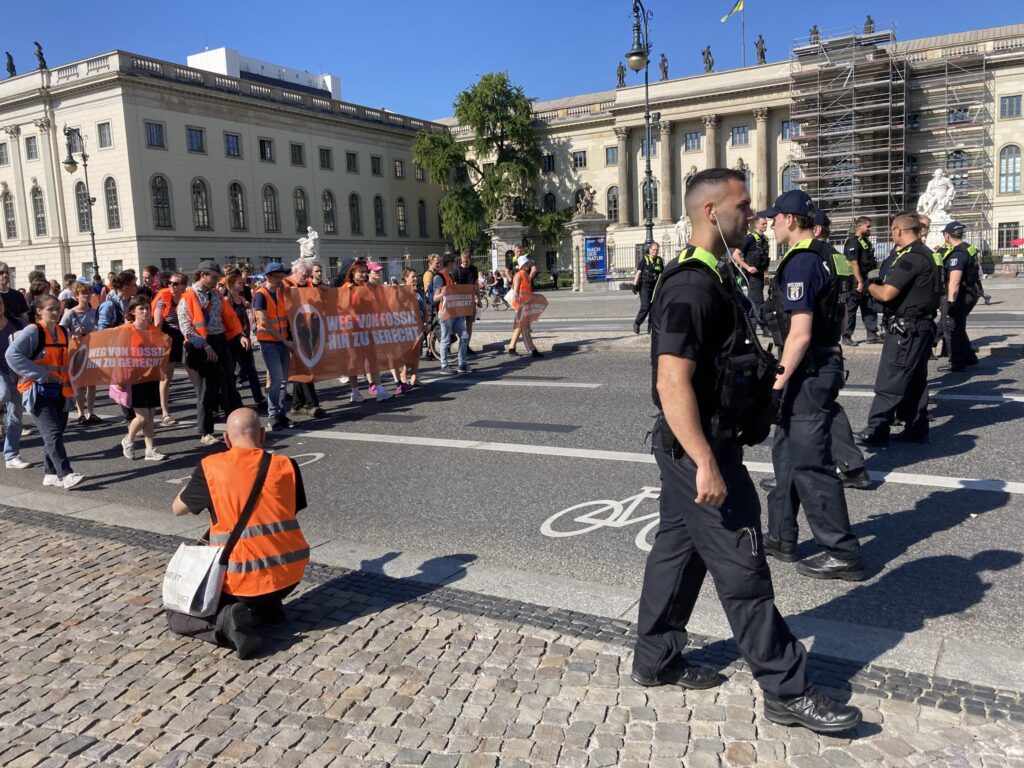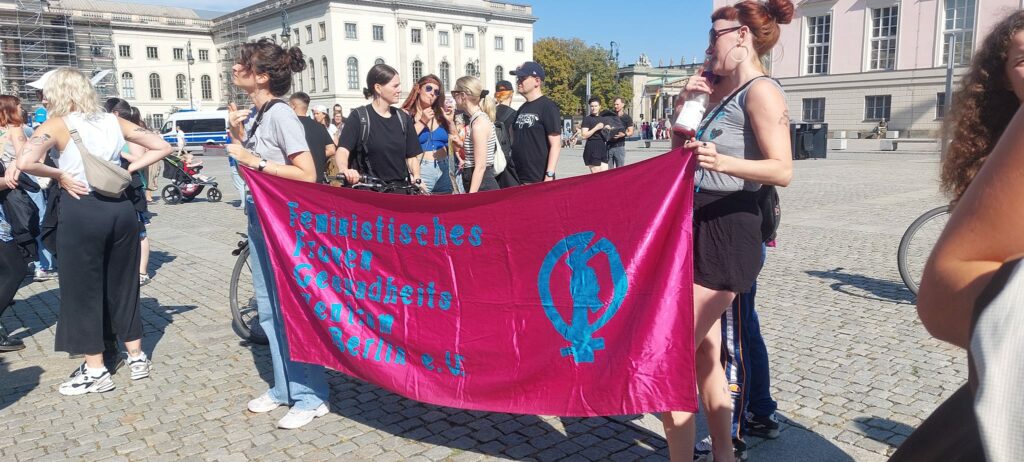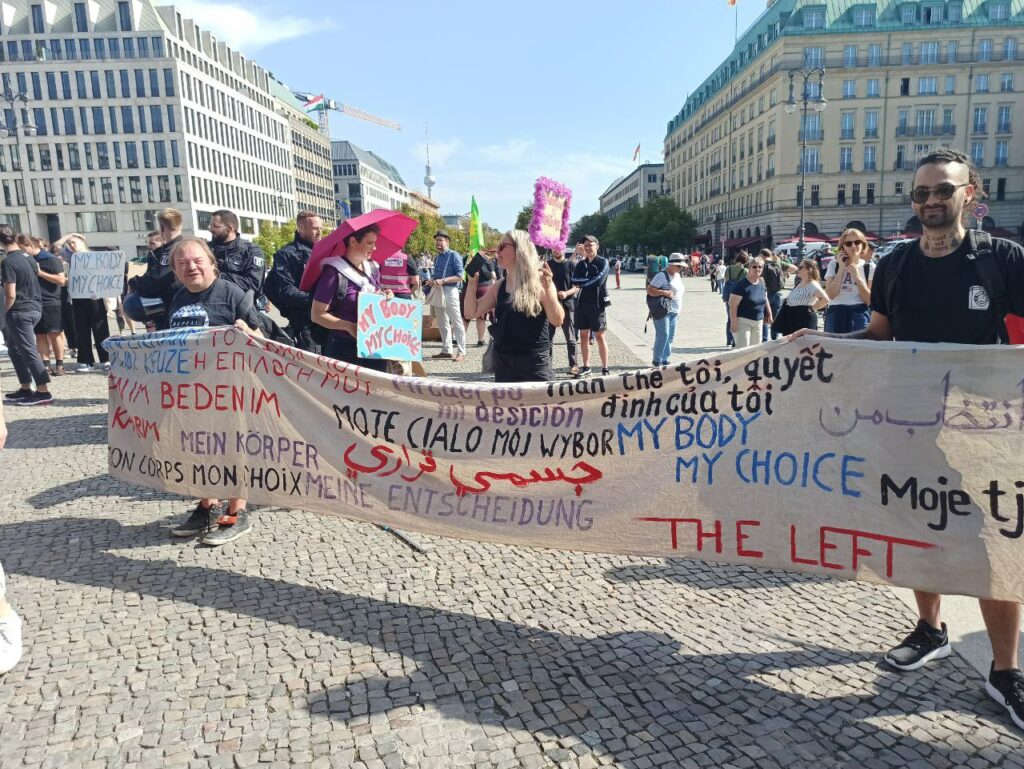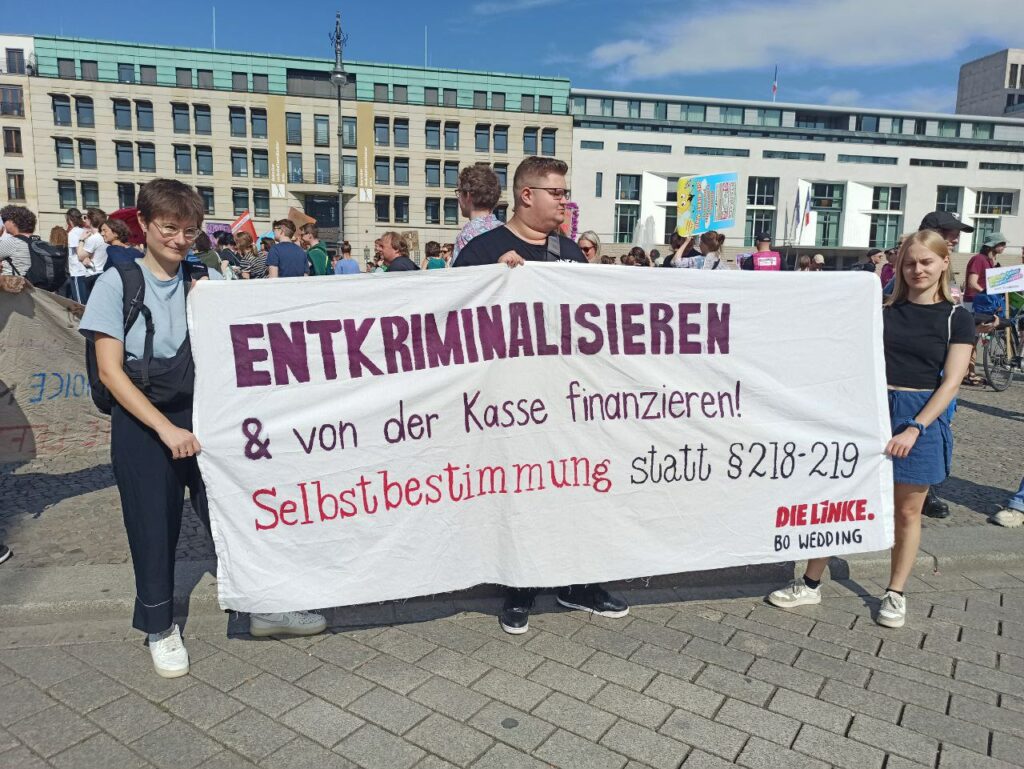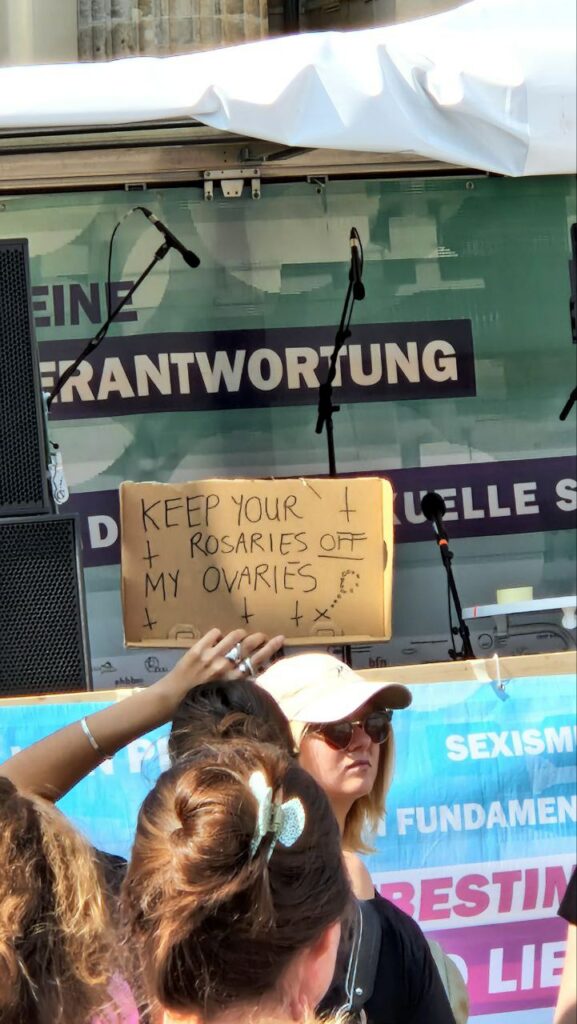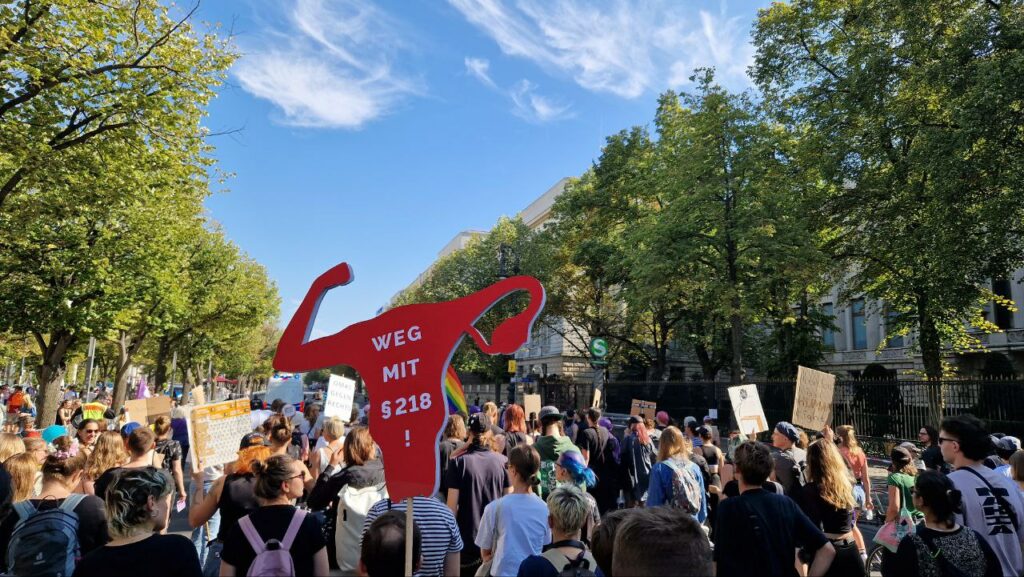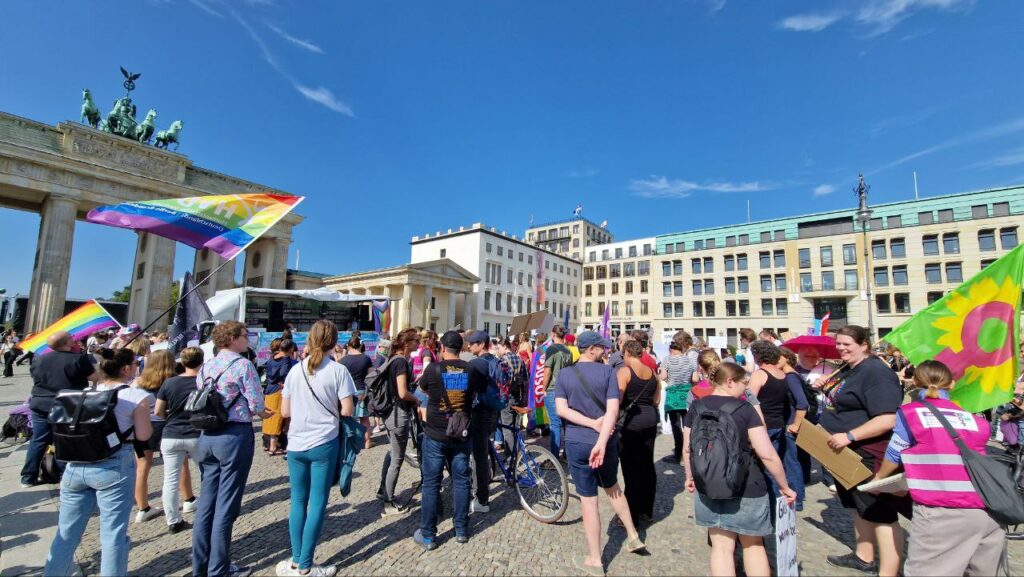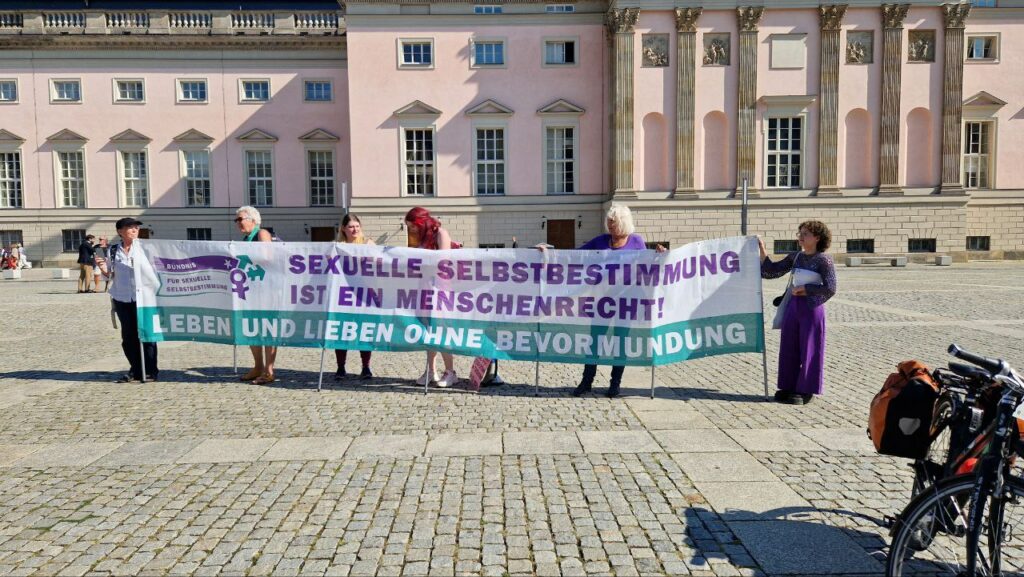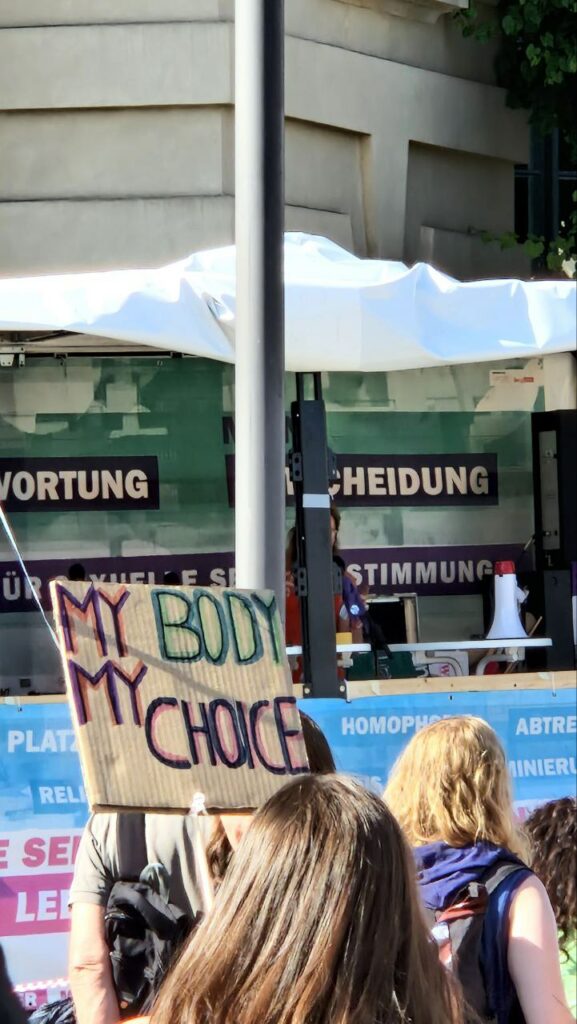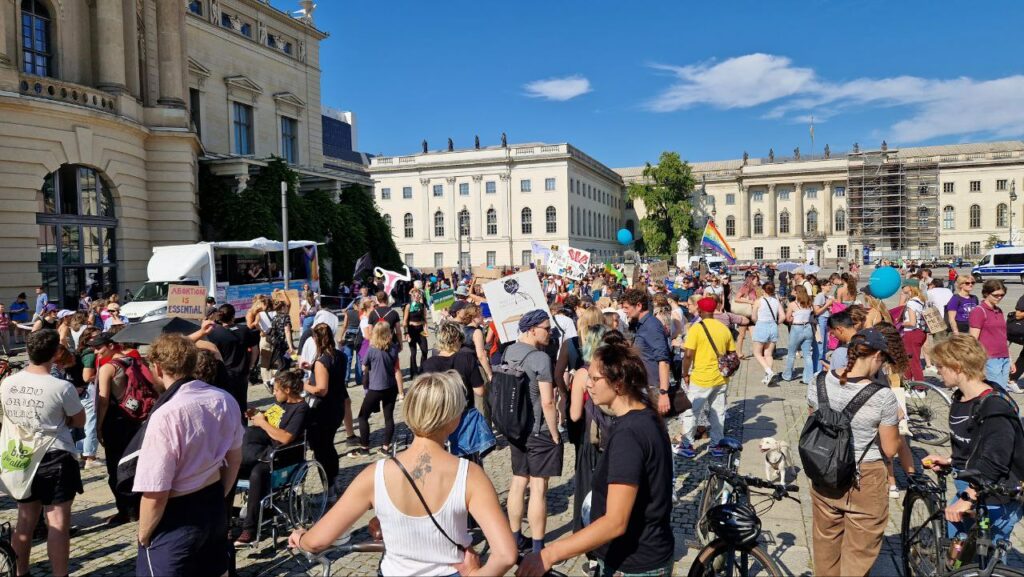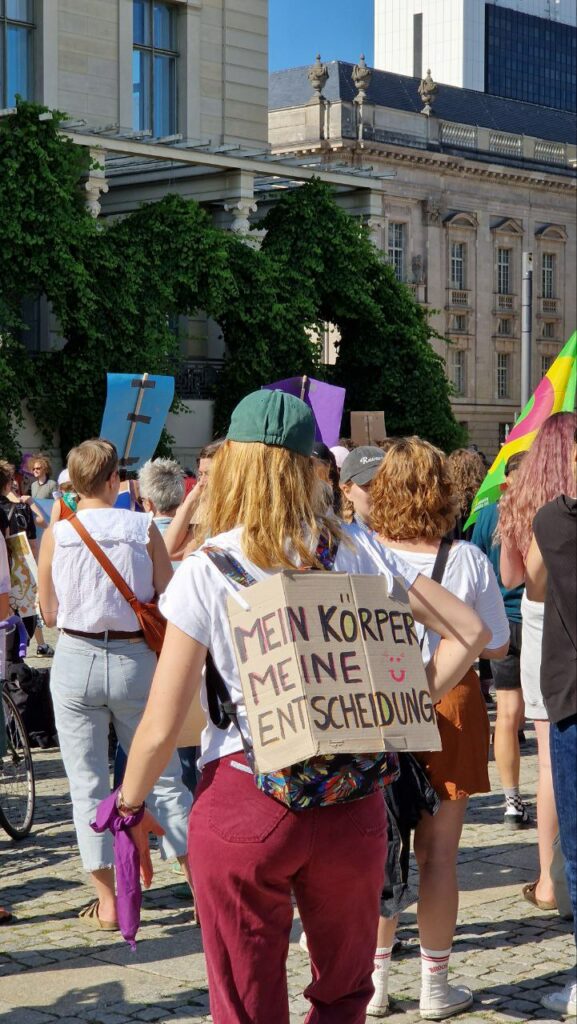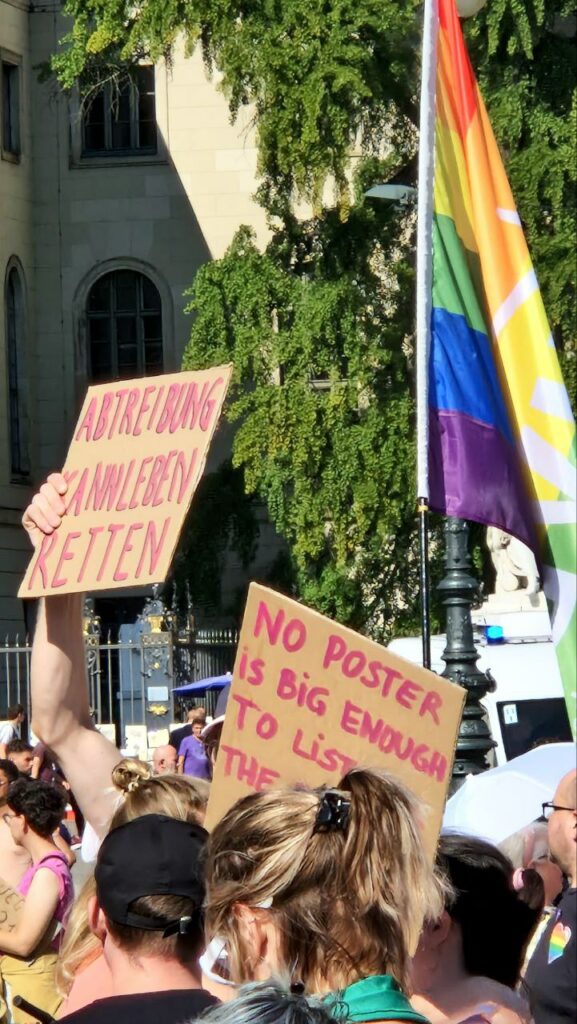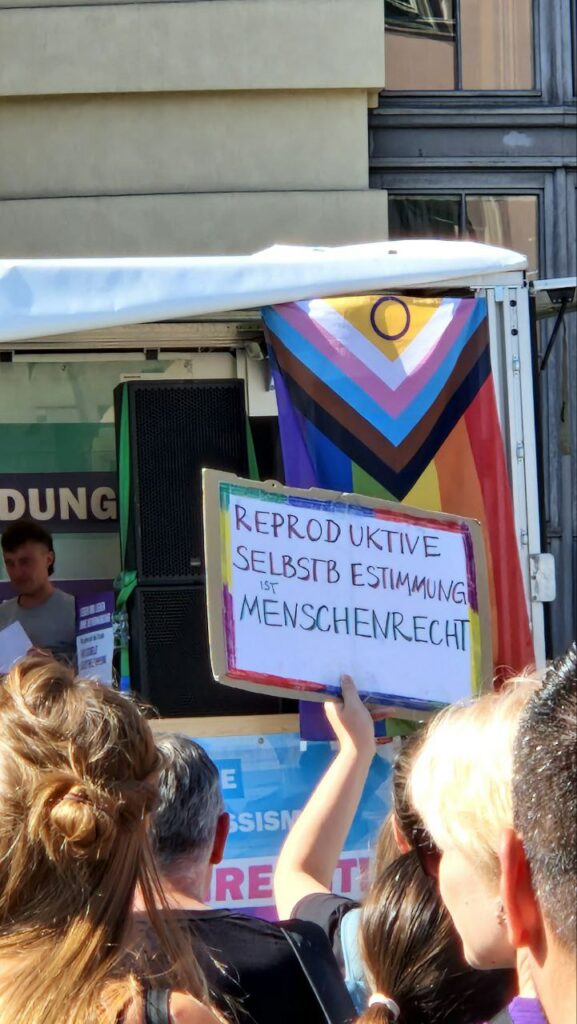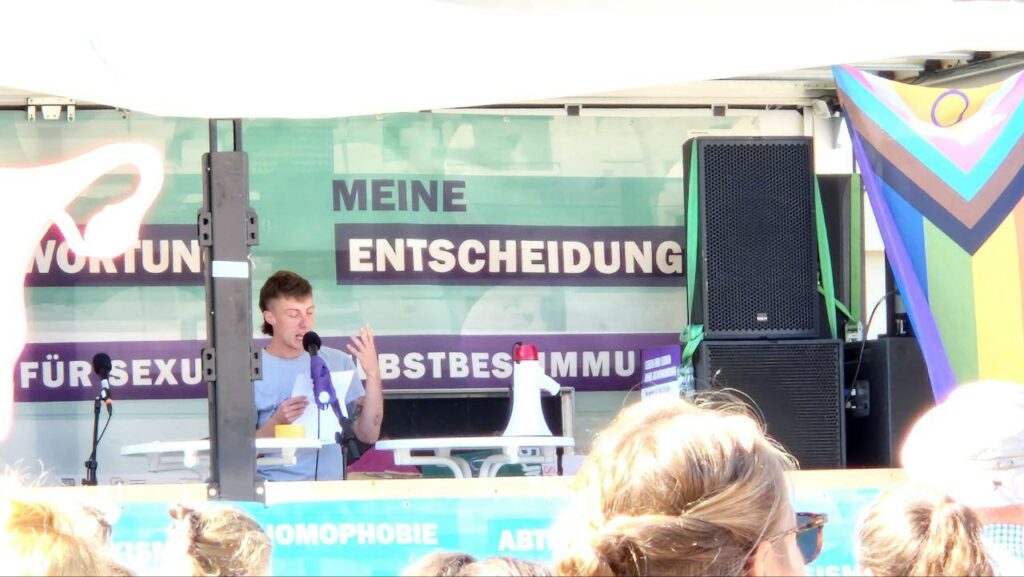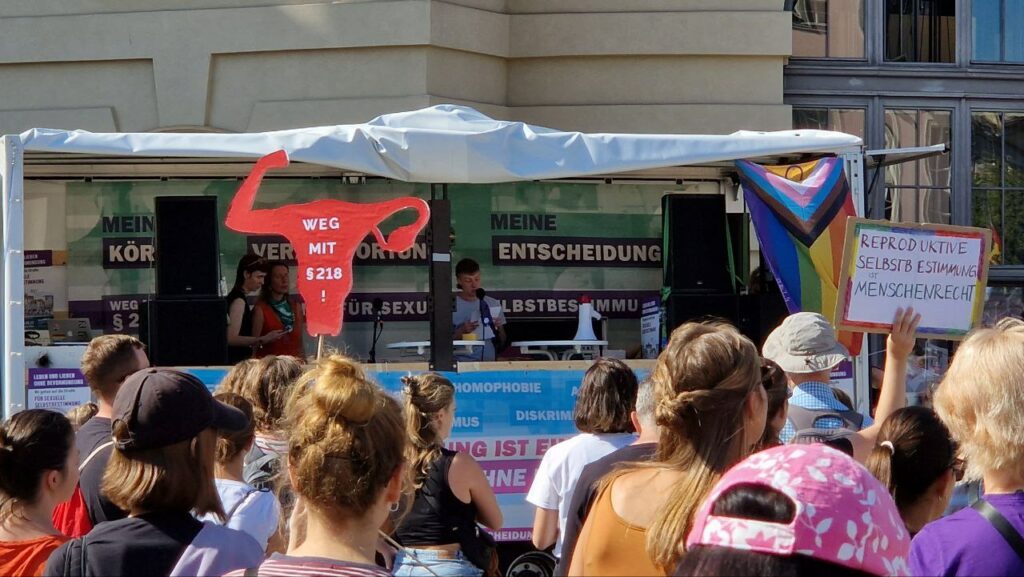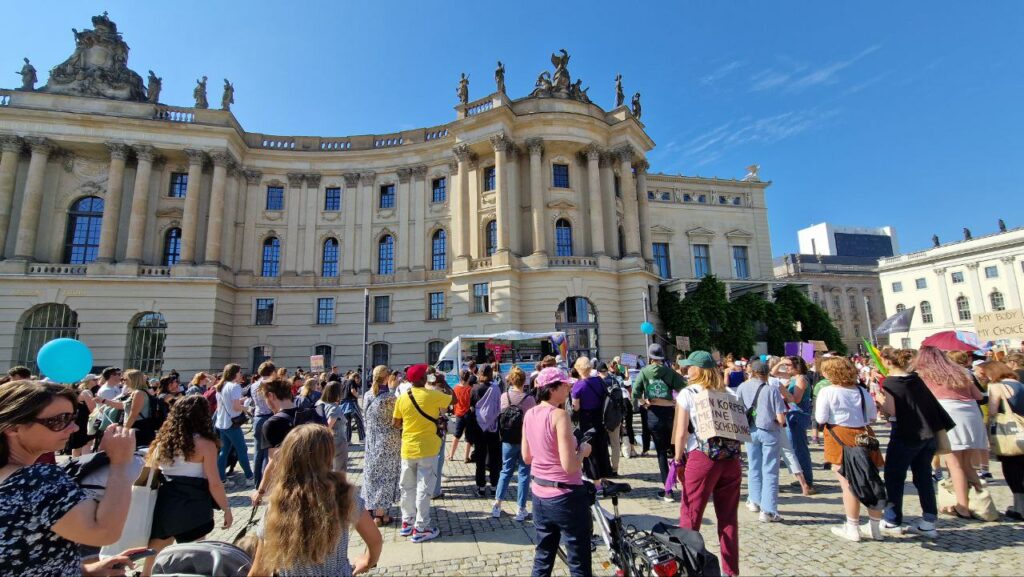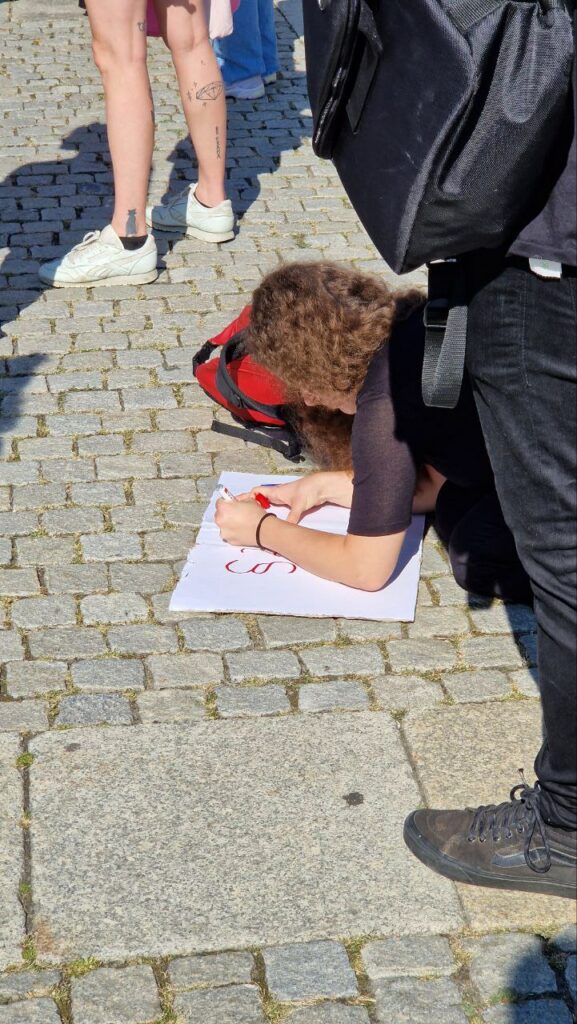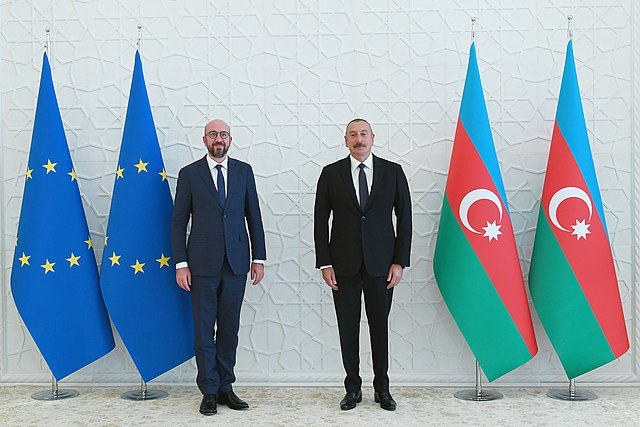A number of people have contacted theleftberlin recently to express their interest in contributing to our website. As a result, we have recently expanded our editorial board and are still looking for writers, editors, translators and people who are active on social media platforms. Commissioning editor of theleftberlin Phil Butland explains where we started, and how we got to where we are now.
10 years ago, the LINKE Berlin internationals began as a group of mainly non-German activists living in Berlin to mobilise for the 2014 EU election. After the election was over, the group just kept on growing, and with it, its potential audience. In the decade since the group was formed, the percentage of Berliners without a German passport has increased from 10% to over 25%.
The LINKE Internationals are still active, and as the name suggests, receive some funding from die LINKE, the German Left party. It has set itself the dual aims of integrating non-Germans into German politics and making the German Left more aware of the wealth of talent and experience living on its doorstep. While the Berlin Internationals is a political project, theleftberlin – which is independent of parties but shares some members – is primarily a journalistic project.
Initially, the LINKE Internationals had their own website, which mainly contained events and activities in Berlin that could be of interest to an international Leftist audience. As the website developed, it started publishing more political articles. Some people who did not want to be connected to die LINKE were interested in being part of what we were doing with the website, so in October 2019, it was relaunched as theleftberlin.com.
Since then, theleftberlin has had an independent editorial board. Although many of our journalists have strong opinions on all sorts of issues, we do not toe any “party line”. Instead, we aim to contribute to the discussion within the international Left in Berlin and beyond.
2020 Relaunch
In December 2020, we at theleftberlin relaunched the website with a new design and expanded our editorial board, many of whom were Berlin-based Leftists who wanted to stay active during the lockdown period of the pandemic. We decided that if there were few opportunities to take to the streets, we would at least take journalistic steps towards building the movement. It was around this time that our current structures started to emerge.
The original website tended to republish articles which had appeared elsewhere, as selected by the editorial board. Since our relaunch, however, we have concentrated on original material – most articles we publish have not appeared in English anywhere else with a few exceptions; most notably, calls to action from the Global South that have not reached a wide enough audience in Europe.
One of our first major projects was the series Rebellious Daughters of History – pen portraits of around 100 radical women by British socialist historian Judy Cox. Some of the women were well-known, others forgotten, but all helped change the course of history. The articles were later published by Bookmarks publications as a book.
Editorial board
We have a weekly editorial meeting which lasts between 30 minutes and an hour. We review the previous week’s articles and take decisions about which articles we would like to publish, and which possible writers and interview partners we could approach. Between meetings, we communicate on the online platform Mattermost.
We have a wish list of articles that we would like to publish, including those to which no one has committed yet. After each editorial meeting, we post a list of articles in search of an author on our Mattermost page, so that people who don’t have the time or inclination to take part in editorial meetings can see some possible subjects which they might address.
As we do not have a budget, the work is 100% voluntary, so we can only publish articles if we find a volunteer to write it or give us an interview. This has its benefits and disadvantages, but it does mean that everyone who works on the website is treated equally. Members of the editorial team write some of the articles, but we also invite people from campaigns and local activists to write about what they are doing.
Our collaborators and confederates
We maintain a close working relationship with the Berlin LINKE Internationals, whose activities we continue to publish on our Events page. If we are looking for an article about a certain part of the world, we usually reach out to Berlin-based exile organisations like Berlin for India or Sudan Uprising. We also have an agreement with Bloque Latinamericano that we will try to translate and publish each other’s articles.
Since the Deutsche Wohnen & Co Enteignen (DWE) campaign to expropriate the big landlords hit Berlin, we have published a number of articles by Right2TheCity, DWE’s working group for non-Germans. Some of our editorial team are also active in Right2TheCity. We also publish regular articles by housing activist Nancy du Plessis.
We were recently approached by a journalist at the neues deutschland newspaper who is interested in working together, so we will see what comes out of this potential collaboration. We are also grateful for the countless individuals – some of whom have been professional journalists, others, people who just want an outlet for their thoughts – who have contributed articles. Our website is much stronger as a result.
What we publish
theleftberlin has gone through some changes over the years, but we have always attempted to provide quality left-wing journalism for an international audience. Although we concentrate on Berlin and Germany, we have a wider brief, with correspondents in cities like Paris, Athens and New York who regularly report on what’s happening in their country.
We do not have a strict editorial line and try instead to reflect the full range of debate on the Left. But there are some things that we will not publish. We oppose all forms of racism, sexism, transphobia, and imperialism. We are also aware that part of the Left and women’s movement have taken positions which are objectively transphobic. Such opinions have no place on our website. Similarly, a worrying part of the German Left supports Israeli settler colonialism. Those views would be better suited to other outlets, of which there are plenty.
We do not speak with one voice on all issues. If we are offered an article that reflects a point of view on the Left, we will usually publish it. But if individual editorial board members disagree with its contents, we may publish a reply offering an alternative point of view.
Every so often, people ask us why we haven’t covered a particular issue. The usual reason is not that we don’t want to, or that we have refused to cover something on principle, but that every published article needs someone to write it. So, if you think that theleftberlin should be doing more to cover a particular issue or viewpoint, please consider writing something yourself, or finding us someone who is acquainted with the subject matter.
Newsletter
One of our big successes is our weekly Newsletter, which we’ve been sending in different forms since early 2019. The Newsletter is now sent out every Thursday lunchtime to over 1,500 people. If you don’t receive it already, you can subscribe here. Like the website, the Newsletter has evolved over time.
The Newsletter currently contains a summary of (usually) five events and activities which will take place in Berlin in the coming week. We also list publications on theleftberlin that have been posted since the previous Newsletter, as well as occasional links to podcasts, videos, photo galleries and radio programmes. We also include the following features, which can also be found on the Website.
The Campaign of the Week (COTW) introduces an organisation or alliance in Berlin, usually one which is organising an event in the coming week. As well as being in the Newsletter, the COTW is linked from our homepage for one week. After that, it is stored in our COTW archive, which is now home to over 150 campaigns.
News from Berlin and Germany is a summary of 6-8 news stories from the previous week. There is a paragraph of information about each story, and a link to the original, which is usually a newspaper report in German. The News from Berlin and Germany item is published on the website every Wednesday. You can search for previous versions here.
Left journalism Day School
In November 2021, we organised our first Left Journalism Day School, in which members of our editorial board introduced parallel workshops on conducting interviews, creating videos for social media platforms, and producing a podcast episode. This was followed by a session by Tina Lee from Unbias the News on how to write for the web. Finally, Alice Lambert and Phil Butland from our editorial board introduced sessions on how people could concretely work on theleftberlin.
After very positive feedback from the 30 people who attended, we organised a second Day School in May 2022. The format was similar, but this time we also presented on Radio Berlin International (see below) and Tina returned to talk about Storytelling and Research. Once more, the emphasis was on collaboration, and giving everyone a voice, regardless of how much or little experience in journalism they had.
Originally, we had planned to offer the journalism Day Schools on a regular six-month rhythm, but people were too involved in other projects to be able to realise that aim. We do hope to be able another Day School in 2024 as we think that the experience of the first schools was a great benefit to both the attendees and the theleftberlin website.
Radio Berlin International
In December 2021, we launched Radio Berlin International, a radio programme that is broadcast every other Sunday on reboot.fm on 88.4 MHz in Berlin, 90.7 MHz in Potsdam, and “FR-BB & 24/3” on DAB+ Digital Radio in Berlin. reboot.fm is currently on summer break, but the next programme should go out on October 8th.
The shows last an hour in total and consist of two to three interviews or reports mixed with music chosen by the interviewees. The subject matter follows the aim of theleftberlin, namely, catering to the international Leftist audience based in Berlin. All past episodes can be accessed via our website.
Get involved
There are now roughly 30 people working in some capacity for theleftberlin, and we are always happy to welcome more helping hands. We prefer to give people small, regular tasks, and to allow them the ability to do as much or as little as their current situations allow.
We also welcome unsolicited articles on any subject which interests you. You can read some guidelines about the format of our articles here. If a subject is not urgent (or if it’s something which won’t go away, like climate disaster), we prefer not to set deadlines and wait until the author has something they are happy with.
Although most communication is online (either through Mattermost or in the weekly editorial meeting), we are planning to have occasional face-to-face meetings to discuss medium and long-term planning. This will be open both to the editorial team and to anyone who’s interested in what we are doing.
If any of this sounds interesting to you, or you just want to know more, you can contact us at team@theleftberlin.com. Please help us not just to interpret the world, but also to try to change it.

